Helen Keller
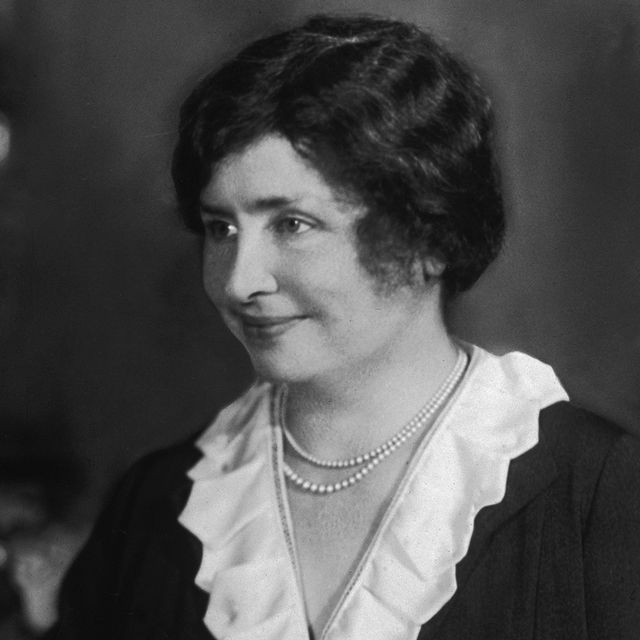
(1880-1968)

Who Was Helen Keller?
Helen Keller was an American educator, advocate for the blind and deaf and co-founder of the ACLU. Stricken by an illness at the age of 2, Keller was left blind and deaf. Beginning in 1887, Keller's teacher, Anne Sullivan, helped her make tremendous progress with her ability to communicate, and Keller went on to college, graduating in 1904. During her lifetime, she received many honors in recognition of her accomplishments.
Early Life and Family
The family was not particularly wealthy and earned income from their cotton plantation. Later, Arthur became the editor of a weekly local newspaper, the North Alabamian .
Keller was born with her senses of sight and hearing, and started speaking when she was just 6 months old. She started walking at the age of 1.
Loss of Sight and Hearing
Keller lost both her sight and hearing at just 19 months old. In 1882, she contracted an illness — called "brain fever" by the family doctor — that produced a high body temperature. The true nature of the illness remains a mystery today, though some experts believe it might have been scarlet fever or meningitis.
Within a few days after the fever broke, Keller's mother noticed that her daughter didn't show any reaction when the dinner bell was rung, or when a hand was waved in front of her face.
As Keller grew into childhood, she developed a limited method of communication with her companion, Martha Washington, the young daughter of the family cook. The two had created a type of sign language. By the time Keller was 7, they had invented more than 60 signs to communicate with each other.
During this time, Keller had also become very wild and unruly. She would kick and scream when angry, and giggle uncontrollably when happy. She tormented Martha and inflicted raging tantrums on her parents. Many family relatives felt she should be institutionalized.
Keller's Teacher, Anne Sullivan
Keller worked with her teacher Anne Sullivan for 49 years, from 1887 until Sullivan's death in 1936. In 1932, Sullivan experienced health problems and lost her eyesight completely. A young woman named Polly Thomson, who had begun working as a secretary for Keller and Sullivan in 1914, became Keller's constant companion upon Sullivan's death.
Looking for answers and inspiration, Keller's mother came across a travelogue by Charles Dickens, American Notes, in 1886. She read of the successful education of another deaf and blind child, Laura Bridgman, and soon dispatched Keller and her father to Baltimore, Maryland to see specialist Dr. J. Julian Chisolm.
After examining Keller, Chisolm recommended that she see Alexander Graham Bell , the inventor of the telephone, who was working with deaf children at the time. Bell met with Keller and her parents, and suggested that they travel to the Perkins Institute for the Blind in Boston, Massachusetts.
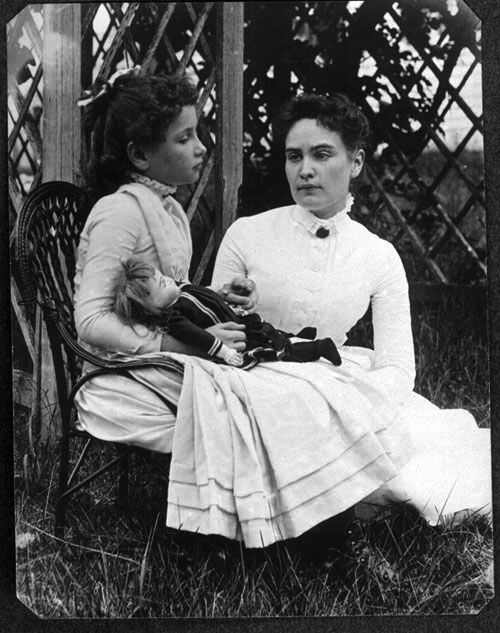
There, the family met with the school's director, Michael Anaganos. He suggested Keller work with one of the institute's most recent graduates, Sullivan.
On March 3, 1887, Sullivan went to Keller's home in Alabama and immediately went to work. She began by teaching six-year-old Keller finger spelling, starting with the word "doll," to help Keller understand the gift of a doll she had brought along. Other words would follow.
At first, Keller was curious, then defiant, refusing to cooperate with Sullivan's instruction. When Keller did cooperate, Sullivan could tell that she wasn't making the connection between the objects and the letters spelled out in her hand. Sullivan kept working at it, forcing Keller to go through the regimen.
As Keller's frustration grew, the tantrums increased. Finally, Sullivan demanded that she and Keller be isolated from the rest of the family for a time, so that Keller could concentrate only on Sullivan's instruction. They moved to a cottage on the plantation.
In a dramatic struggle, Sullivan taught Keller the word "water"; she helped her make the connection between the object and the letters by taking Keller out to the water pump, and placing Keller's hand under the spout. While Sullivan moved the lever to flush cool water over Keller's hand, she spelled out the word w-a-t-e-r on Keller's other hand. Keller understood and repeated the word in Sullivan's hand. She then pounded the ground, demanding to know its "letter name." Sullivan followed her, spelling out the word into her hand. Keller moved to other objects with Sullivan in tow. By nightfall, she had learned 30 words.
In 1905, Sullivan married John Macy, an instructor at Harvard University, a social critic and a prominent socialist. After the marriage, Sullivan continued to be Keller's guide and mentor. When Keller went to live with the Macys, they both initially gave Keller their undivided attention. Gradually, however, Anne and John became distant to each other, as Anne's devotion to Keller continued unabated. After several years, the couple separated, though were never divorced.
In 1890, Keller began speech classes at the Horace Mann School for the Deaf in Boston. She would toil for 25 years to learn to speak so that others could understand her.
From 1894 to 1896, Keller attended the Wright-Humason School for the Deaf in New York City. There, she worked on improving her communication skills and studied regular academic subjects.
Around this time, Keller became determined to attend college. In 1896, she attended the Cambridge School for Young Ladies, a preparatory school for women.
As her story became known to the general public, Keller began to meet famous and influential people. One of them was the writer Mark Twain , who was very impressed with her. They became friends. Twain introduced her to his friend Henry H. Rogers, a Standard Oil executive.
Rogers was so impressed with Keller's talent, drive and determination that he agreed to pay for her to attend Radcliffe College. There, she was accompanied by Sullivan, who sat by her side to interpret lectures and texts. By this time, Keller had mastered several methods of communication, including touch-lip reading, Braille, speech, typing and finger-spelling.
Keller graduated, cum laude, from Radcliffe College in 1904, at the age of 24.
DOWNLOAD BIOGRAPHY'S HELEN KELLER FACT CARD
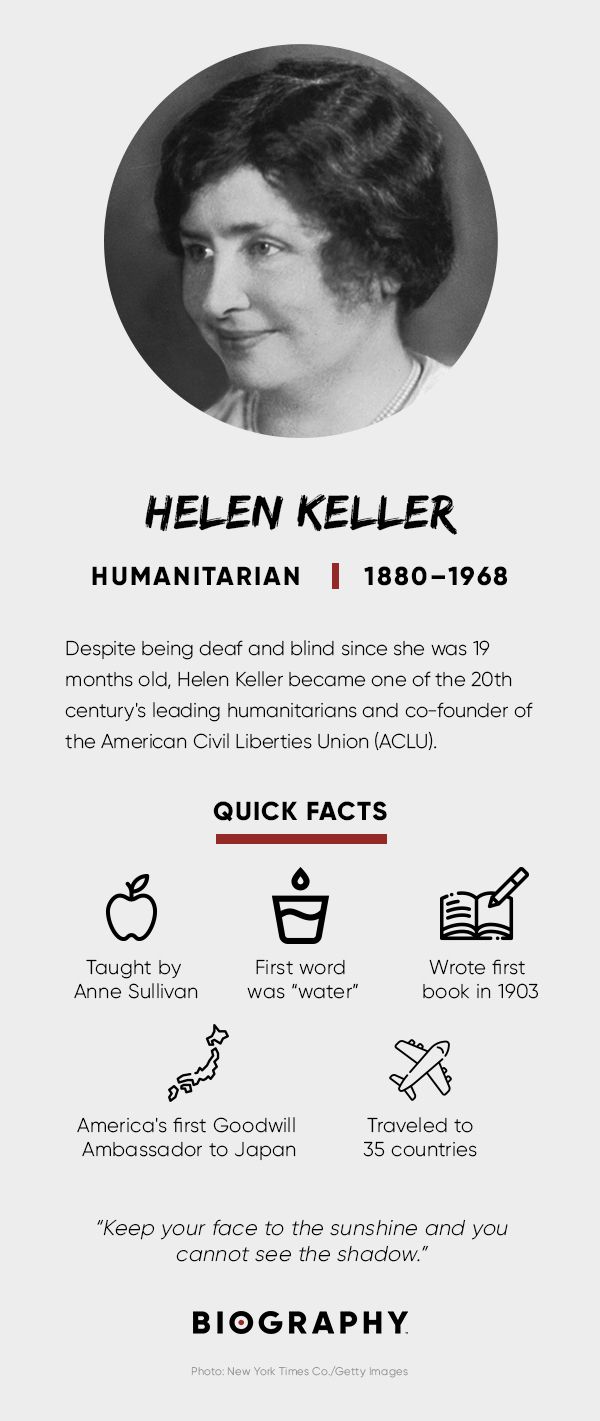
'The Story of My Life'
With the help of Sullivan and Macy, Sullivan's future husband, Keller wrote her first book, The Story of My Life . Published in 1905, the memoirs covered Keller's transformation from childhood to 21-year-old college student.
Social Activism
Throughout the first half of the 20th century, Keller tackled social and political issues, including women's suffrage, pacifism, birth control and socialism.
After college, Keller set out to learn more about the world and how she could help improve the lives of others. News of her story spread beyond Massachusetts and New England. Keller became a well-known celebrity and lecturer by sharing her experiences with audiences, and working on behalf of others living with disabilities. She testified before Congress, strongly advocating to improve the welfare of blind people.
In 1915, along with renowned city planner George Kessler, she co-founded Helen Keller International to combat the causes and consequences of blindness and malnutrition. In 1920, she helped found the American Civil Liberties Union .
When the American Federation for the Blind was established in 1921, Keller had an effective national outlet for her efforts. She became a member in 1924, and participated in many campaigns to raise awareness, money and support for the blind. She also joined other organizations dedicated to helping those less fortunate, including the Permanent Blind War Relief Fund (later called the American Braille Press).
Soon after she graduated from college, Keller became a member of the Socialist Party, most likely due in part to her friendship with John Macy. Between 1909 and 1921, she wrote several articles about socialism and supported Eugene Debs, a Socialist Party presidential candidate. Her series of essays on socialism, entitled "Out of the Dark," described her views on socialism and world affairs.
It was during this time that Keller first experienced public prejudice about her disabilities. For most of her life, the press had been overwhelmingly supportive of her, praising her courage and intelligence. But after she expressed her socialist views, some criticized her by calling attention to her disabilities. One newspaper, the Brooklyn Eagle , wrote that her "mistakes sprung out of the manifest limitations of her development."
In 1946, Keller was appointed counselor of international relations for the American Foundation of Overseas Blind. Between 1946 and 1957, she traveled to 35 countries on five continents.
In 1955, at age 75, Keller embarked on the longest and most grueling trip of her life: a 40,000-mile, five-month trek across Asia. Through her many speeches and appearances, she brought inspiration and encouragement to millions of people.
'The Miracle Worker' Movie
Keller's autobiography, The Story of My Life , was used as the basis for 1957 television drama The Miracle Worker .
In 1959, the story was developed into a Broadway play of the same title, starring Patty Duke as Keller and Anne Bancroft as Sullivan. The two actresses also performed those roles in the 1962 award-winning film version of the play.
Awards and Honors
During her lifetime, she received many honors in recognition of her accomplishments, including the Theodore Roosevelt Distinguished Service Medal in 1936, the Presidential Medal of Freedom in 1964, and election to the Women's Hall of Fame in 1965.
Keller also received honorary doctoral degrees from Temple University and Harvard University and from the universities of Glasgow, Scotland; Berlin, Germany; Delhi, India; and Witwatersrand in Johannesburg, South Africa. She was named an Honorary Fellow of the Educational Institute of Scotland.
Keller died in her sleep on June 1, 1968, just a few weeks before her 88th birthday. Keller suffered a series of strokes in 1961 and spent the remaining years of her life at her home in Connecticut.
During her remarkable life, Keller stood as a powerful example of how determination, hard work, and imagination can allow an individual to triumph over adversity. By overcoming difficult conditions with a great deal of persistence, she grew into a respected and world-renowned activist who labored for the betterment of others.
QUICK FACTS
- Name: Helen Adams Keller
- Birth Year: 1880
- Birth date: June 27, 1880
- Birth State: Alabama
- Birth City: Tuscumbia
- Birth Country: United States
- Gender: Female
- Best Known For: American educator Helen Keller overcame the adversity of being blind and deaf to become one of the 20th century's leading humanitarians, as well as co-founder of the ACLU.
- Education and Academia
- Astrological Sign: Cancer
- Wright-Humason School for the Deaf
- Radcliffe College
- Cambridge School for Young Ladies
- Horace Mann School for the Deaf
- Death Year: 1968
- Death date: June 1, 1968
- Death State: Connecticut
- Death City: Easton
- Death Country: United States
We strive for accuracy and fairness.If you see something that doesn't look right, contact us !
CITATION INFORMATION
- Article Title: Helen Keller Biography
- Author: Biography.com Editors
- Website Name: The Biography.com website
- Url: https://www.biography.com/activists/helen-keller
- Access Date:
- Publisher: A&E; Television Networks
- Last Updated: May 6, 2021
- Original Published Date: April 3, 2014
- Keep your face to the sunshine and you cannot see the shadow.
- One can never consent to creep when one feels an impulse to soar.
- Remember, no effort that we make to attain something beautiful is ever lost. Sometime, somewhere, somehow we shall find that which we seek.
- Gradually from naming an object we advance step by step until we have traversed the vast distance between our first stammered syllable and the sweep of thought in a line of Shakespeare.
- If it is true that the violin is the most perfect of musical instruments, then Greek is the violin of human thought.
- A happy life consists not in the absence, but in the mastery of hardships.
- The two greatest characters in the 19th century are Napoleon and Helen Keller. Napoleon tried to conquer the world by physical force and failed. Helen tried to conquer the world by power of mind — and succeeded!” (Mark Twain)
- The bulk of the world’s knowledge is an imaginary construction.
- We differ, blind and seeing, one from another, not in our senses, but in the use we make of them, in the imagination and courage with which we seek wisdom beyond the senses.
- [T]he mystery of language was revealed to me. I knew then that "w-a-t-e-r" meant the wonderful cool something that was flowing over my hand. That living word awakened my soul, gave it light, hope, joy, set it free!
- It is more difficult to teach ignorance to think than to teach an intelligent blind man to see the grandeur of Niagara.
- Everything has its wonders, even darkness and silence, and I learn, whatever state I may be in, therein to be content.
Watch Next .css-smpm16:after{background-color:#323232;color:#fff;margin-left:1.8rem;margin-top:1.25rem;width:1.5rem;height:0.063rem;content:'';display:-webkit-box;display:-webkit-flex;display:-ms-flexbox;display:flex;}
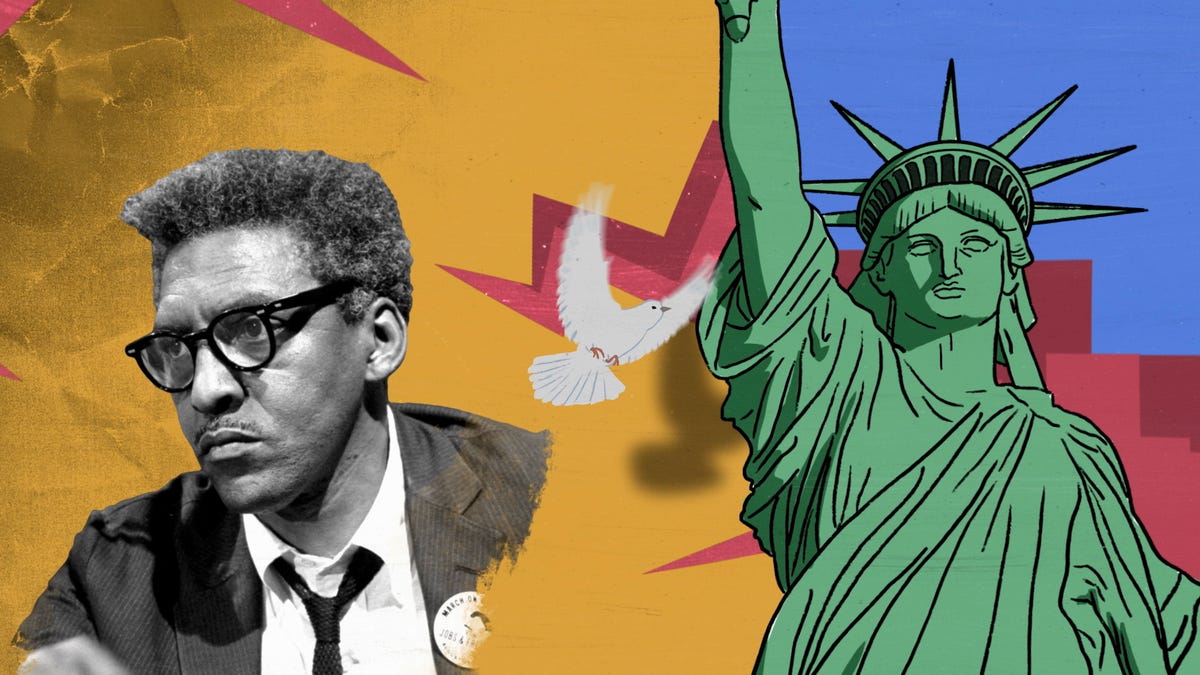
Suffragettes
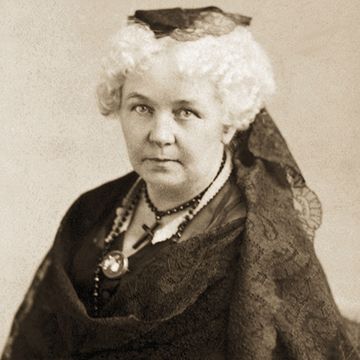
Harriet Tubman
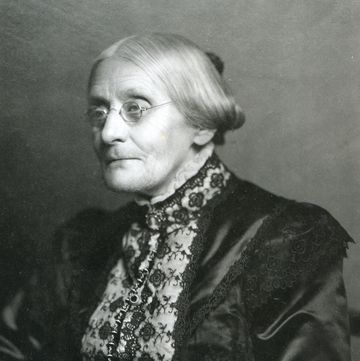
Susan B. Anthony
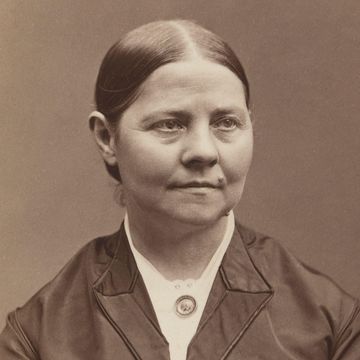
Lucretia Mott
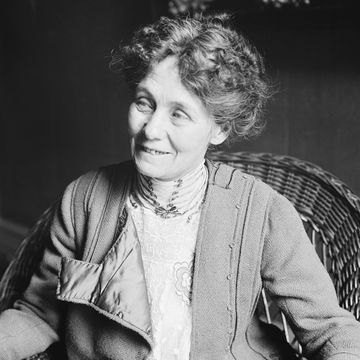
Emmeline Pankhurst

Carrie Chapman Catt
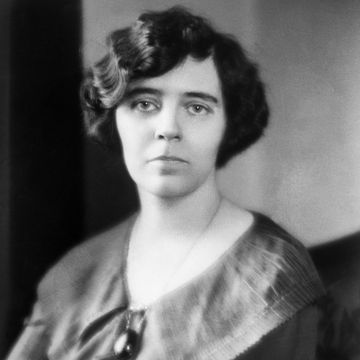
Kate Sheppard
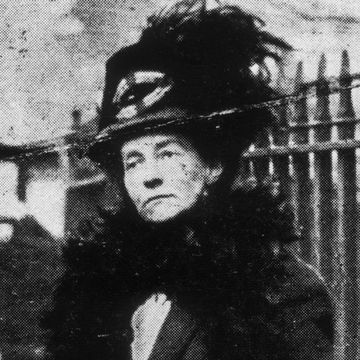
Emily Davison

Molly Brown
- History Classics
- Your Profile
- Find History on Facebook (Opens in a new window)
- Find History on Twitter (Opens in a new window)
- Find History on YouTube (Opens in a new window)
- Find History on Instagram (Opens in a new window)
- Find History on TikTok (Opens in a new window)
- This Day In History
- History Podcasts
- History Vault
Helen Keller
By: History.com Editors
Updated: January 18, 2019 | Original: April 14, 2010

Helen Keller was an author, lecturer, and crusader for the handicapped. Born in Tuscumbia, Alabama , She lost her sight and hearing at the age of nineteen months to an illness now believed to have been scarlet fever. Five years later, on the advice of Alexander Graham Bell , her parents applied to the Perkins Institute for the Blind in Boston for a teacher, and from that school hired Anne Mansfield Sullivan. Through Sullivan’s extraordinary instruction, the little girl learned to understand and communicate with the world around her. She went on to acquire an excellent education and to become an important influence on the treatment of the blind and deaf.
Keller learned from Sullivan to read and write in Braille and to use the hand signals of the deaf-mute, which she could understand only by touch. Her later efforts to learn to speak were less successful, and in her public appearances she required the assistance of an interpreter to make herself understood. Nevertheless, her impact as educator, organizer, and fund-raiser was enormous, and she was responsible for many advances in public services to the handicapped.
With Sullivan repeating the lectures into her hand, Keller studied at schools for the deaf in Boston and New York City and graduated cum laude from Radcliffe College in 1904. Her unprecedented accomplishments in overcoming her disabilities made her a celebrity at an early age; at twelve she published an autobiographical sketch in the Youth’s Companion , and during her junior year at Radcliffe, she produced her first book, The Story of My Life , still in print in over fifty languages. Keller published four other books of her personal experiences as well as a volume on religion, one on contemporary social problems, and a biography of Anne Sullivan. She also wrote numerous articles for national magazines on the prevention of blindness and the education and special problems of the blind.
In addition to her many appearances on the lecture circuit, Keller in 1918 made a movie in Hollywood, Deliverance , to dramatize the plight of the blind and during the next two years supported herself and Sullivan on the vaudeville stage. She also spoke and wrote in support of women’s rights and other liberal causes and in 1940 strongly backed the United States’ entry into World War II .
In 1924, Keller joined the staff of the newly formed American Foundation for the Blind as an adviser and fund-raiser. Her international reputation and warm personality enabled her to enlist the support of many wealthy people, and she secured large contributions from Henry Ford , John D. Rockefeller , and leaders of the motion picture industry. When the AFB established a branch for the overseas blind, it was named Helen Keller International. Keller and Sullivan were the subjects of a Pulitzer Prize-winning play, The Miracle Worker, by William Gibson, which opened in New York in 1959 and became a successful Hollywood film in 1962.
Widely honored throughout the world and invited to the White House by every U.S. president from Grover Cleveland to Lyndon B. Johnson , Keller altered the world’s perception of the capacities of the handicapped. More than any act in her long life, her courage, intelligence, and dedication combined to make her a symbol of the triumph of the human spirit over adversity.

Sign up for Inside History
Get HISTORY’s most fascinating stories delivered to your inbox three times a week.
By submitting your information, you agree to receive emails from HISTORY and A+E Networks. You can opt out at any time. You must be 16 years or older and a resident of the United States.
More details : Privacy Notice | Terms of Use | Contact Us

Helen Keller
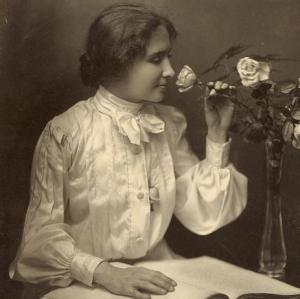
Undeterred by deafness and blindness, Helen Keller rose to become a major 20 th century humanitarian, educator and writer. She advocated for the blind and for women’s suffrage and co-founded the American Civil Liberties Union.
Born on June 27, 1880 in Tuscumbia, Alabama, Keller was the older of two daughters of Arthur H. Keller, a farmer, newspaper editor, and Confederate Army veteran, and his second wife Katherine Adams Keller, an educated woman from Memphis. Several months before Helen’s second birthday, a serious illness—possibly meningitis or scarlet fever—left her deaf and blind. She had no formal education until age seven, and since she could not speak, she developed a system for communicating with her family by feeling their facial expressions.
Recognizing her daughter’s intelligence, Keller’s mother sought help from experts including inventor Alexander Graham Bell, who had become involved with deaf children. Ultimately, she was referred to Anne Sullivan, a graduate of the Perkins School for the Blind, who became Keller’s lifelong teacher and mentor. Although Helen initially resisted her, Sullivan persevered. She used touch to teach Keller the alphabet and to make words by spelling them with her finger on Keller’s palm. Within a few weeks, Keller caught on. A year later, Sullivan brought Keller to the Perkins School in Boston, where she learned to read Braille and write with a specially made typewriter. Newspapers chronicled her progress. At fourteen, she went to New York for two years where she improved her speaking ability, and then returned to Massachusetts to attend the Cambridge School for Young Ladies. With Sullivan’s tutoring, Keller was admitted to Radcliffe College, graduating cum laude in 1904. Sullivan went with her, helping Keller with her studies. (Impressed by Keller, Mark Twain urged his wealthy friend Henry Rogers to finance her education.)
Even before she graduated, Keller published two books, The Story of My Life (1902) and Optimism (1903), which launched her career as a writer and lecturer. She authored a dozen books and articles in major magazines, advocating for prevention of blindness in children and for other causes.
Sullivan married Harvard instructor and social critic John Macy in 1905, and Keller lived with them. During that time, Keller’s political awareness heightened. She supported the suffrage movement, embraced socialism, advocated for the blind and became a pacifist during World War I. Keller’s life story was featured in the 1919 film, Deliverance . In 1920, she joined Jane Addams, Crystal Eastman, and other social activists in founding the American Civil Liberties Union; four years later she became affiliated with the new American Foundation for the Blind in 1924.
After Sullivan’s death in 1936, Keller continued to lecture internationally with the support of other aides, and she became one of the world’s most-admired women (though her advocacy of socialism brought her some critics domestically). During World War II, she toured military hospitals bringing comfort to soldiers.
A second film on her life won the Academy Award in 1955; The Miracle Worker —which centered on Sullivan—won the 1960 Pulitzer Prize as a play and was made into a movie two years later. Lifelong activist, Keller met several US presidents and was honored with the Presidential Medal of Freedom in 1964. She also received honorary doctorates from Glasgow, Harvard, and Temple Universities.
- “Helen Keller.” Perkins. Accessed February 4, 2015.
- “Helen Keller.” American Foundation for the Blind. Accessed February 4, 2015.
- "Helen Adams Keller." Dictionary of American Biography . New York: Charles Scribner's Sons, 1988. U.S. History in Context . Accessed February 4, 2015.
- "Keller, Helen." UXL Encyclopedia of U.S. History . Sonia Benson, Daniel E. Brannen, Jr., and Rebecca Valentine. Vol. 5. Detroit: UXL, 2009. 847-849. U.S. History in Context . Accessed February 4, 2015.
- Ozick, Cynthia. “What Helen Keller Saw.” The New Yorker. June 16, 2003. Accessed February 4, 2015.
- Weatherford, Doris. American Women's History: An A to Z of People, Organizations, Issues, and Events . New York: Prentice Hall, 1994.
- PHOTO: Library of Congress
MLA - Michals, Debra. "Helen Keller." National Women's History Museum. National Women's History Museum, 2015. Date accessed.
Chicago - Michals, Debra. "Helen Keller." National Women's History Museum. 2015. www.womenshistory.org/education-resources/biographies/helen-keller.
Helen Keller: Described and Captioned Educational Media
Helen Keller Biography, American Foundation for the Blind
Helen Keller, Perkins School for the Blind
Helen Keller Birthplace
Helen Keller International
The Miracle Worker (1962). Dir. Arthur Penn. (DVD) Film.
The Miracle Worker (2000). Dir. Nadia Tass. (DVD) Film.
Keller, Helen. The World I Live In . New York: NYRB Classics, 2004.
Ford, Carin. Helen Keller: Lighting the Way for the Blind and Deaf . Enslow Publishers, 2001.
Herrmann, Dorothy. Helen Keller: A Life . Chicago: The University of Chicago Press, 1998.
Related Biographies

Stacey Abrams

Abigail Smith Adams

Jane Addams

Toshiko Akiyoshi
Related background, “when we sing, we announce our existence”: bernice johnson reagon and the american spiritual', mary church terrell , belva lockwood and the precedents she set for women’s rights, faith ringgold and her fabulous quilts.
Biography Online

Helen Keller Biography
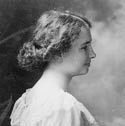
“Once I knew the depth where no hope was, and darkness lay on the face of all things. Then love came and set my soul free. Once I knew only darkness and stillness. Now I know hope and joy.”
– Helen Keller, On Optimism (1903)
Short Biography of Helen Keller
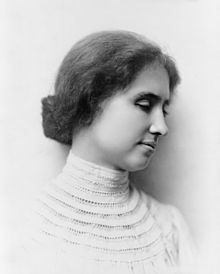
In 1886, Helen was sent to see an eye, ear and nose specialist in Baltimore. He put them in touch with Alexander Graham Bell , who was currently investigate issues of deafness and sound (he would also develop the first telephone) Bell was moved by the experience of working with Keller, writing that:
“I feel that in this child I have seen more of the Divine than has been manifest in anyone I ever met before.”
Alexander Bell helped Keller to visit the Perkins Institute for the Blind, and this led to a long relationship with Anne Sullivan – who was a former student herself. Sullivan was visually impaired and, aged only 20, and with no prior experience, she set about teaching Helen how to communicate. The two maintained a long relationship of 49 years.
Learning to Communicate
In the beginning, Keller was frustrated by her inability to pick up the hand signals that Sullivan was giving. However, after a frustrating month, Keller picked up on Sullivan’s system of hand signals through understanding the word water. Sullivan poured water over Keller’s left hand and wrote out on her right hand the word ‘water’. This helped Helen to fully understand the system, and she was soon able to identify a variety of household objects.
“The most important day I remember in all my life is the one on which my teacher, Anne Mansfield Sullivan, came to me. I am filled with wonder when I consider the immeasurable contrasts between the two lives which it connects. It was the third of March, 1887, three months before I was seven years old.”
– Helen Keller, The Story of My Life , 1903, Ch. 4
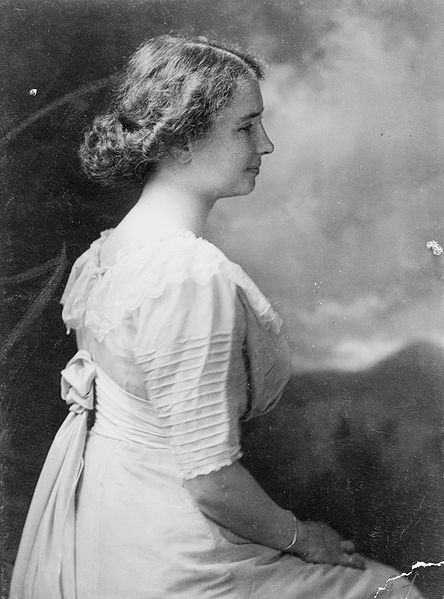
Keller came into contact with American author, Mark Twain . Twain admired the perseverance of Keller and helped persuade Henry Rogers, an oil businessman to fund her education. With great difficulty, Keller was able to study at Radcliffe College, where in 1904, she was able to graduate with a Bachelor of Arts degree. During her education, she also learned to speak and practise lip-reading. Her sense of touch became extremely subtle. She also found that deafness and blindness encouraged her to develop wisdom and understanding from beyond the senses.
“We differ, blind and seeing, one from another, not in our senses, but in the use we make of them, in the imagination and courage with which we seek wisdom beyond the senses.”
― Helen Keller , The Five-sensed World (1910)
Keller became a proficient writer and speaker. In 1903, she published an autobiography ‘ The Story of My Life ‘ It recounted her struggles to overcome her disabilities and the way it forced her to look at life from a different perspective.
“When one door of happiness closes, another opens; but often we look so long at the closed door that we do not see the one which has been opened for us.”
― Helen Keller
Political Views
Keller also wrote on political issues, Keller was a staunch supporter of the American Socialist party and joined the party in 1909. She wished to see a fairer distribution of income, and an end to the inequality of Capitalist society. She said she became a more convinced socialist after the 1912 miners strike. Her book ‘ Out of the Dark ‘ (1913) includes several essays on socialism. She supported Eugene V Debs, in each of the Presidential elections he stood for. In 1912, she joined the Industrial Workers of the World (IWW); as well as advocating socialism, Keller was a pacifist and opposed the American involvement in World War One.
Religious Views
In religious matters, she advocated the teachings of Emanuel Swedenborg, a Christian theologian who advocated a particular spiritual interpretation of the Bible. She published ‘ My Religion ‘ in 1927.
Charity Work
From 1918, she devoted much of her time to raising funds and awareness for blind charities. She sought to raise money and also improve the living conditions of the blind, who at the time were often badly educated and living in asylums. Her public profile helped to de-stigmatise blindness and deafness. She was also noted for her optimism which she sought to cultivate.
“If I am happy in spite of my deprivations, if my happiness is so deep that it is a faith, so thoughtful that it becomes a philosophy of life, — if, in short, I am an optimist, my testimony to the creed of optimism is worth hearing.”
― Helen Keller, Optimism (1903)
Towards the end of her life, she suffered a stroke, and she died in her sleep on June 1, 1968. She was given numerous awards during her life, including the Presidential Medal of Freedom in 1964, by Lyndon B. Johnson.
Citation: Pettinger, Tejvan . “Biography of Helen Keller ”, Oxford, UK www.biographyonline.net , Published: 1st Feb. 2014. Last updated 3rd March 2017.
Hellen Keller – The Story of My Life

Hellen Keller – The Story of My Life at Amazon
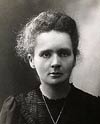
- World Biography
Helen Keller Biography
Born: June 27, 1880 Tuscumbia, Alabama Died: June 1, 1968 Westport, Connecticut American activist for the physically disabled
Though both blind and deaf, American lecturer and author Helen Keller (1880–1968) traveled the world over, fighting for improvement in the education and life of the physically handicapped.
Helen becomes deaf and blind
Helen Adams Keller was born in Tuscumbia, Alabama, on June 27, 1880. Her parents were Captain Arthur H. Keller and Katherine Adams Keller. Her father was a veteran of the confederate army (army that fought to separate from the United States during the Civil War, which lasted from 1861 to 1865). He also was the editor of the local newspaper, the North Alabamian. Helen was born a normal child. She started speaking when she was six months old. By the time she was a year old, she was able to communicate with her parents and she had also learned to walk. When Helen was eighteen months old an illness developed that the doctor described as brain congestion. She ran a high fever for many days, and then the fever was gone. Helen was left deaf and blind from the illness. Helen became a very wild, unruly child. She would scream and kick when she was angry and giggle and laugh when happy. She developed many of her own signals to communicate her needs with her parents.
Her early learning
When Helen was six, her mother contacted Dr. Alexander Graham Bell (1847–1922), whom she had heard was working on devices to help the deaf. Bell met with Helen and her parents and suggested that they contact the Perkins Institute for the Blind in Boston, Massachusetts. In March 1887 Anne Sullivan (1866–1936), a teacher at the institute, came to serve as Helen's teacher. Anne was twenty-one years old and had sight limitations of her own. One month after her arrival, Sullivan had taught Keller the word "water." She did this by using her fingers to spell letters into Helen's hand. From this she understood that objects had names, and that her teacher spelled these names into her hand. This unlocked a whole new world of learning for Helen.
Anne Sullivan was with Helen day and night, constantly spelling into her hand the words and ideas of things going on around them. Helen was a quick learner. In only three years she learned the manual alphabet (sign language), the Braille alphabet (an alphabet created by Louis Braille [1809–1852] for the blind that relies on raised dots to communicate), and she could read and write.
Schools and education
Helen wanted to learn to speak, and in 1890 she began taking speech classes at the Horace Mann School for the Deaf in Boston. She worked diligently at learning to speak. After twenty-five years of hard work and practice, Helen was able to speak in a voice that others could understand.
From 1894 to 1896 Helen attended the Wright-Humason School for the Deaf. Here she continued to work on improving her communication, as well as her math, French, German, and geography. In this way Helen prepared herself for college and went on to Cambridge School for Young Ladies. Anne Sullivan attended every class with Helen and interpreted the lectures and books for her, as they were not in Braille. By the time she was sixteen, Keller had passed the admissions examinations for Radcliffe College; in 1904 she graduated cum laude (with honors). This was all done with the assistance of Anne Sullivan interpreting the lectures and texts.

Devotes life to helping others
As a young woman Keller became determined to learn about the world and to improve the lives of others. With insight, energy, and deep devotion to humanity, she lectured throughout the world, worked to forward her ideas in Congress, and wrote thousands of letters asking for contributions to finance efforts to improve the welfare of the blind. She visited hospitals and helped blind soldiers. She taught the blind to be courageous and to make their lives rich, productive, and beautiful for others and for themselves.
Keller associated with some of the greatest people of her time, including Alexander Graham Bell, Mark Twain (1835–1910), Andrew Carnegie (1835–1919), John D. Rockefeller Sr. (1839–1937), and Presidents Grover Cleveland (1838–1908), Calvin Coolidge (1872–1933), and Woodrow Wilson (1856–1924). She authored such books as Helen Keller's Journal, Out of the Dark, Midstream: My Later Life, My Religion, The Song of the Stone Wall, The World I Live In, and The Story of My Life.
Sullivan served as Keller's counselor and companion. When Keller died in 1968 her name had become a worldwide symbol of what the human spirit can accomplish despite severe physical limitations.
For More Information
Ford, Carin T. Helen Keller: Lighting the Way for the Blind and Deaf. Berkeley Heights, NJ: Enslow, 2001.
Herrmann, Dorothy. Helen Keller: A Life. New York: A. Knopf, 1998.
Keller, Helen. Light in My Darkness. 2nd ed. West Chester, PA: Chrysalis Books, 2000.
Keller, Helen. The Story of My Life. New York: Doubleday, Page, & Co., 1903, revised edition 1991.
Lash, Joseph P. Helen and Teacher: The Story of Helen Keller and Anne Sullivan Macy. New York: Delacorte Press, 1980.
User Contributions:
Comment about this article, ask questions, or add new information about this topic:.
Double your impact!
Let's build a better world.
Helen Keller Intl
Helen keller’s life and legacy.
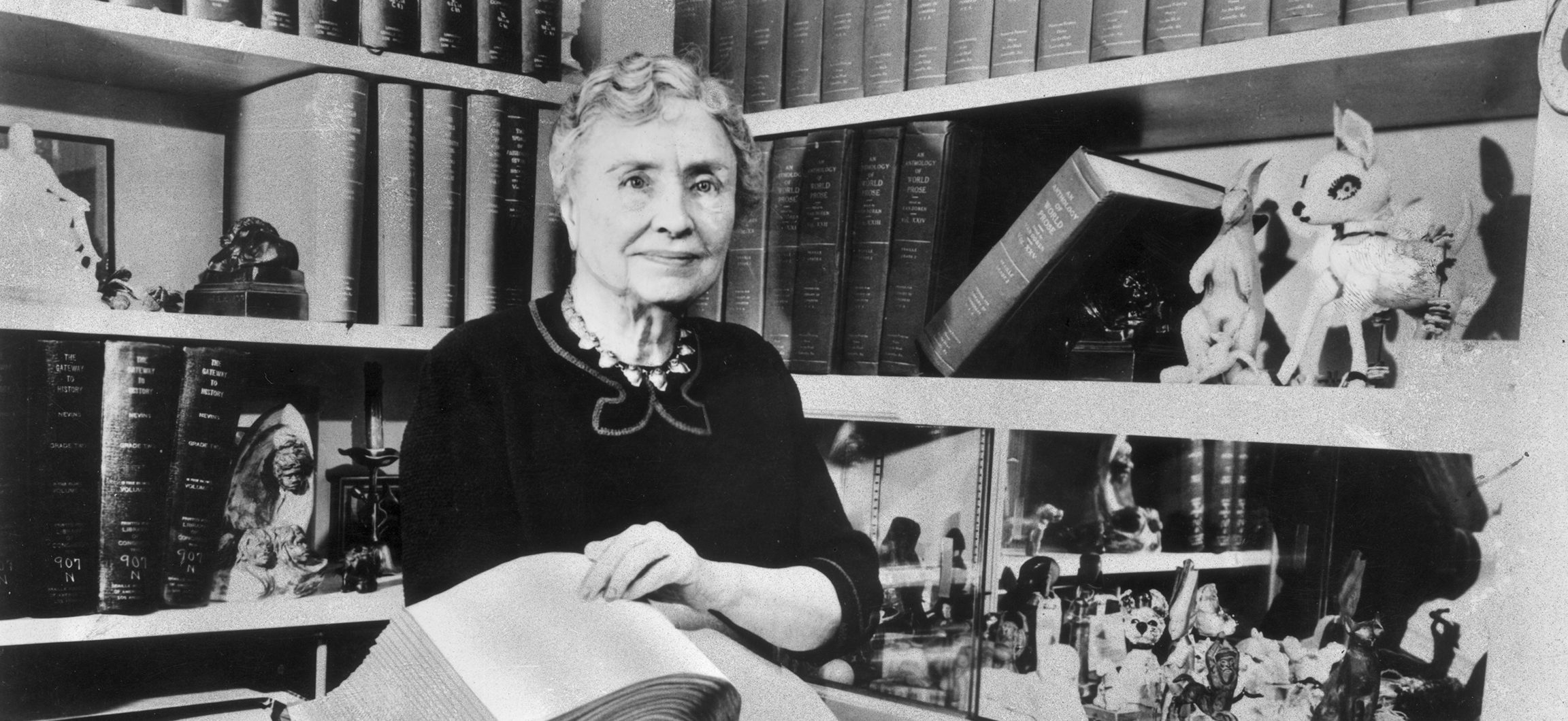
Helen Keller
Helen Keller is known the world over as a symbol of courage in the face of overwhelming odds. Yet she was so much more. A woman of luminous intelligence, high ambition and great accomplishment, she was driven by her deep compassion for others to devote her life to helping them overcome significant obstacles to living healthy and productive lives.
A Living Legacy
Helen Keller Intl was co-founded in 1915 by two extraordinary individuals, Helen Keller and George Kessler, to assist soldiers blinded during their service in the first World War. Since our founding, we have committed ourselves to continuing Helen’s work.
Guided by her fierce optimism, we have been working on the front lines of health for more than 100 years. We deliver life-changing health care to vulnerable families in places where the need is great, but access is limited. Our proven, science-based programs empower people to create opportunities in their own lives.
Today we prioritize the essential building blocks of good health, sound nutrition and clear vision, helping millions of people create lasting change in their own lives.
Our commitment to continuing Helen’s work is firmly rooted in her own belief:
The welfare of each is bound up in the welfare of all.”
A Brief Biographical Timeline
1880: On June 27, Helen Keller is born in Tuscumbia, Alabama.
1882: Following a bout of illness, Helen loses her sight and hearing.
1887: Helen’s parents hire Anne Sullivan, a graduate of the Perkins School for the Blind, to be Helen’s tutor. Anne begins by teaching Helen that objects have names and that she can use her fingers to spell them. Over time, Helen learns to communicate via sign language, to read and write in Braille, to touch-lip read, and to speak.
1900: After attending schools in Boston and New York, Helen matriculates at Radcliffe College.
1903: Helen’s first book, an autobiography called The Story of My Life , is published.
1904: Helen graduates cum laude from Radcliffe, becoming the first deafblind person to earn a Bachelor of Arts degree.
1915: Helen, already a vocal advocate for people with disabilities, co-founds the American Foundation for Overseas Blind to support World War I veterans blinded in combat. This organization later becomes Helen Keller Intl and expands its mission to address the causes and consequences of blindness, malnutrition and poor health.

Help sustain—and build—Helen’s legacy. Your donation now can transform the lives of vulnerable children and adults facing vision loss, malnutrition and diseases of poverty.
1920: Helen helps found the American Civil Liberties Union (ACLU).
1924: Helen joins the American Foundation for the Blind. She serves as a spokesperson and ambassador for the foundation until her death.
1946: Helen begins touring internationally on behalf of the American Foundation for Overseas Blind (see 1915 above), expanding her advocacy for people with vision impairment. In 11 years, she will visit 35 countries on five continents.
1956: Helen wins an Academy Award for a documentary film about her life.
1961: Helen suffers a stroke and retires from public life.
1964: Helen is awarded the Presidential Medal of Freedom by President Lyndon Johnson.
1968: On June 1, Helen dies peacefully at her home in Connecticut. Her ashes are interred at the National Cathedral in Washington, DC.
Get updates & stay connected
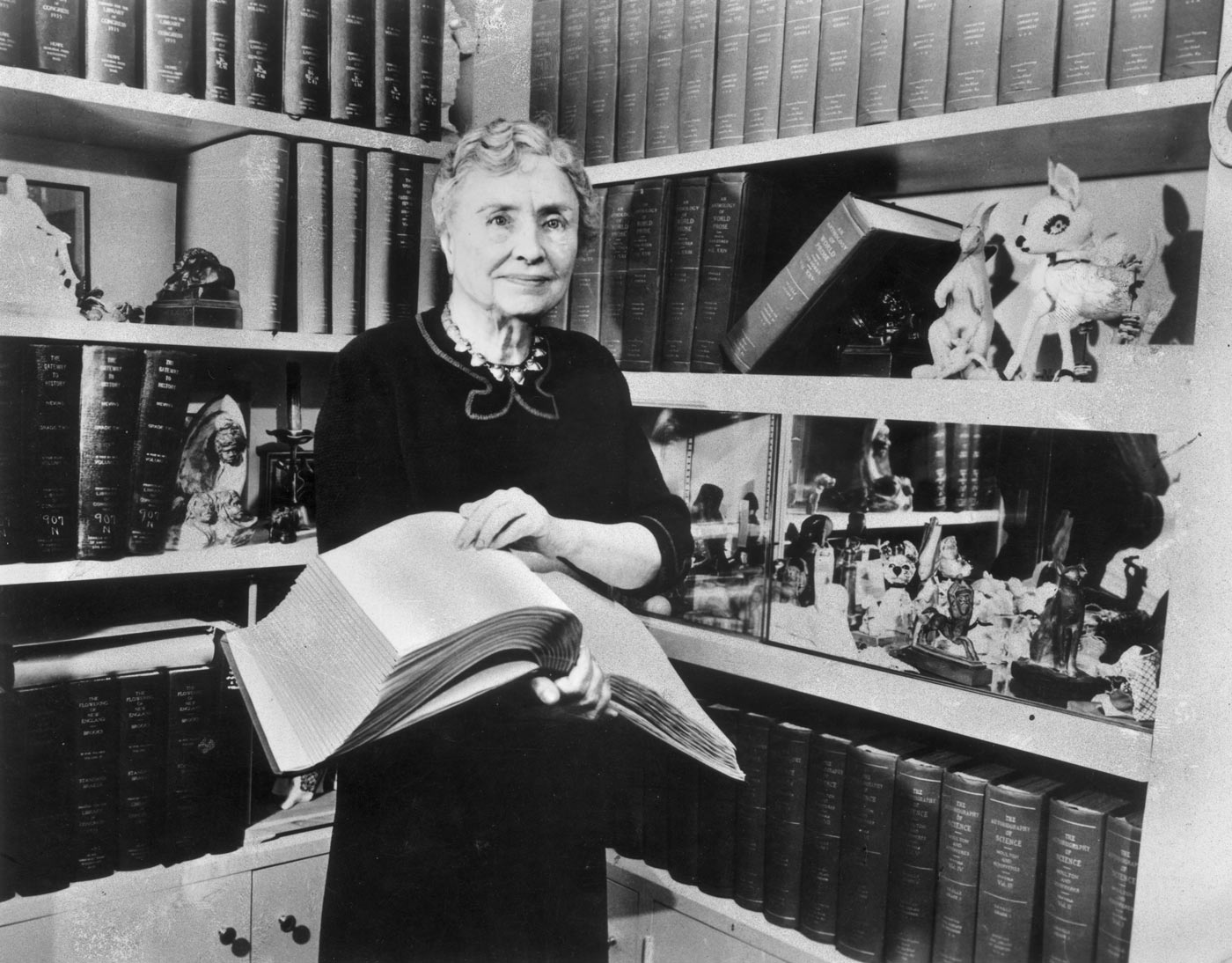
Put your compassion to work for families who lack essential nutrition and healthcare — and help them build more resilient futures.
Act before midnight on June 5 to have your gift matched!

As a name that is known worldwide, Helen Keller is a symbol of courage and hope. Yet, she is much more than a name or a symbol. She was a woman of astounding intelligence, unwavering determination, unbelievable courage and insurmountable achievement. She dedicated her entire life to the betterment of others, helping people see the potential in their own lives, as well as the lives of people around them. She became the first blind-deaf person to effectively communicate with the sighted and hearing world. In so doing, she became an international celebrity from the age of eight, even before the era of mass communications.
Helen Adams Keller was born on June, 27, 1880 to Arthur H. Keller and Kate Adams Keller in the small, north Alabama town of Tuscumbia. When she was only 19 months old, she contracted a fever that would leave her both deaf and blind. At almost seven years of age, her mother and father took her to see the famous inventor, Dr. Alexander Graham Bell, who advised them to hire a governess for the child.
On March 3, 1887, Anne Mansfield Sullivan, a partially blind, twenty-one year old woman, arrived in Tuscumbia to be Helen’s teacher. With patience, understanding and love, Miss Sullivan was able to save Helen from her “double dungeon of darkness and silence”.
With the help of her beloved teacher, Helen quickly and eagerly learned to read and write. After attending high school at the Perkins School for the Blind in Boston, Massachusetts, Miss Sullivan helped Helen enroll in Radcliffe College, formerly the all-male Harvard College’s coordinate institution for female students. With remarkable determination, Helen graduated Cum Laude in 1904, becoming the first deaf-blind person to graduate from college. At that time, she announced that her life would be dedicated to the amelioration of blindness.
After graduation, Helen Keller began her life’s work of helping blind and deaf-blind people. She appeared before state and national legislatures and international forums. She regarded herself as a “world citizen”, visiting 39 countries on five continents between 1939 and 1957. She published 14 books and produced numerous articles. Not only was she out-spoken on the needs and issues affecting her fellow deaf and deaf-blind comrades, Helen was also a valiant supporter of women’s suffrage, civil rights, and the labor union movement, as well as many other worthwhile and important causes.
Helen Keller’s pilgrimage from Tuscumbia, Alabama to worldwide recognition is an inspiring story that took her from silence and darkness to a life of vision and advocacy. Against overwhelming odds, she waged a seemingly impossible battle to re-enter the world she had lost. She is one of the most powerful symbols of triumph over adversity our era has produced, leading Winston Churchill to call her, “The greatest woman of our age”.
Helen Keller won numerous honors, including several honorary university degrees, the Lions Humanitarian Award, the Presidential Medal of Freedom, the French Legion of Honor and election to the Women’s Hall of Fame. She also met every President of the United States, from Calvin Coolidge to John F. Kennedy.
Helen died on June 1, 1968 at the age of 87. She was laid to rest in St. Joseph’s Chapel, at the National Cathedral in Washington, D.C. Her legacy reminds us that with faith and courage, we can overcome obstacles in our own lives. With endurance and determination, we can help to better the lives of those around us. With love and patience, we can leave this world a better place.
In 1968, Senator Lister Hill eulogized her as “One of the few persons not born to die”. She will always be known as “The first lady of courage”.
View photos of Helen Keller and those she touched.
View the chronology of Helen Keller’s life.

“To keep our faces toward change and behave like free spirits in the presence of fate, is strength un-defeatable.” -Helen Keller
Featured Reading
The Foundation understands that the message of courage and selflessness implied in Helen Keller’s legacy is and always will be important to transmit to new generations – both for its own value, and as a means to promote public understanding of vision and hearing research.
Continue Reading…
Help Advance Research
The Foundation’s research discoveries have the potential to save substantial sight and to reduce healthcare expenditures by $50 million annually. The research efforts have also generated more than 700 publications and presentations and earned a particularly strong reputation in the areas of eye trauma and surgical treatment of the center of vision, the macula. The Helen Keller Prize for Vision Research was established to honor research excellence and is now commonly regarded as the premier award in vision research.


The Biography of Helen Keller
Helen Adams Keller was born a healthy child on June 27, 1880, to Captain Arthur H. and Kate Adams Keller of Tuscumbia. Her father, Arthur H. Keller, was a retired Confederate Army captain and editor of the local newspaper. Her mother, Kate Keller, was an educated young woman from Memphis.
When Helen Keller was 19 months old, she was afflicted by an unknown illness, possibly scarlet fever or meningitis, which left her deaf and blind.
Helen was quite intelligent and tried to learn in her own way with taste, feel and smell. She developed a rudimentary sign language with which to communicate, but soon she realized that her family members could communicate with their mouths instead of signing. This left her isolated, unruly and prone to wild tantrums. Some members of her family considered institutionalizing her.
Keller would later write in her autobiography, “the need of some means of communication became so urgent that these outbursts occurred daily, sometimes hourly.”
Seeking to improve her condition, in 1886 Helen and her parents traveled from their Alabama home to Baltimore, Maryland, to see an oculist who had had some success in dealing with conditions of the eye. After examining Keller, he told her parents that he could not restore her sight, but suggested that she could still be educated, referring them to Alexander Graham Bell, who despite having achieved worldwide fame with the invention of the telephone, was working with deaf children in Washington, D.C.
After the visit Bell connected the Kellers to The Perkins Institute and by March 3, 1887 Anne Sullivan came to Ivy Green to be Helen’s teacher. The strong willed Sullivan, a recent graduate of the Perkins school, met her match in Helen. The two worked together even though Helen pinched, hit, kicked and even knocked out one of Anne’s teeth. Once she had gained Helen’s trust, the real work could begin.
Anne began teaching Helen using finger spelling into the child’s hand. Although Helen enjoyed this, she didn’t understand it truly until Sullivan was steadily pumping cool water into one of the girl’s hands while repeatedly tapping out the five letters in W-A-T-E-R. She continued finger spelling while pumping the water again and again as young Helen painstakingly struggled to break her world of silence.
Suddenly the signals crossed Helen’s consciousness with a meaning. By nightfall, Helen had learned 30 words using this process.
After Helen’s miraculous break-through at the simple well-pump, she proved so gifted that she soon learned the fingertip alphabet and shortly afterward to write. By the end of August, in six short months, she knew 625 words.
By age 10, Helen had mastered Braille as well as the manual alphabet and even learned to use the typewriter. By the time she was 16, Helen could speak well enough to go to preparatory school and to college. Sullivan interpreted lectures and class discussions to Helen. In 1904 she became the first deaf-blind person to graduate cum laude from Radcliffe College.
Helen became one of history’s most remarkable women. She dedicated her life to improving the conditions of the visually impaired and the hearing impaired around the world, lecturing in more than 25 countries. She helped to create the American Civil Liberties Union advocating for the rights of women and of those with disabilities.
During her life she performed on the Vaudeville circuit, earned an Oscar, was nominated for the Nobel Peace Prize, traveled to 25 countries and met every President from Grover Cleveland to John F. Kennedy, 12 to be exact.
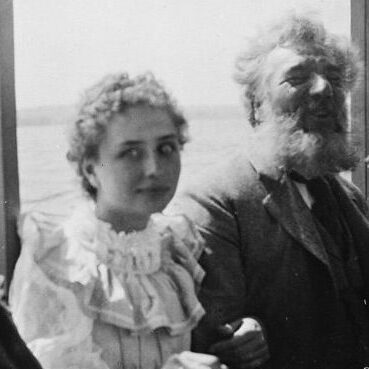
Keller stopped her public appearances in 1961 after she suffered a series of strokes. She was unable to attend the ceremony when President Lyndon B. Johnson awarded her with the Presidential Medal of Freedom.
Keller’s 1968 funeral was held at the National Cathedral, and more than 1,200 people were in attendance. Alabama Senator Lister Hill gave the eulogy. He said, “She will live on, one of the few, the immortal names not born to die. Her spirit will endure as long as man can read and stories can be told of the woman who showed the world there are no boundaries to courage and faith.”
Helen is interred at the National Cathedral in Washington D.C. in the Chapel of St. Joseph of Arimathea.
A Cathedral crypt is just off that chapel. A small, bronze plaque on the wall shows this is Keller’s final resting place. The plaque simply states: “Helen Keller and her lifelong companion Anne Sullivan Macy are interred in the columbarium behind this chapel.” Those same words are also written in Braille.
Although only Keller’s and Sullivan’s names are listed on the plaque, Polly Thomson, Keller’s companion later in life, is also interred with the other two women’s ashes.

Co-Founding the ACLU, Fighting for Labor Rights and Other Helen Keller Accomplishments Students Don’t Learn in School
W hile the world marked International Day of Persons with Disabilities on Dec. 3, the history of people with disabilities is still not fully taught in schools. In the U.S., if American schoolchildren learn about any person with disabilities, they learn that President Franklin Delano Roosevelt once had polio and used a wheelchair in office, and they learn about Deafblind activist Helen Keller.
Most students learn that Keller, born June 27, 1880, in Tuscumbia, Ala., was left deaf and blind after contracting a high fever at 19 months, and that her teacher Anne Sullivan taught her braille, lip-reading, finger spelling and eventually, how to speak . Students may watch the Oscar-winning 1962 movie The Miracle Worker, which depicts these milestones as miraculous. Keller has become a worldwide symbol for children to overcome any obstacle . At the U.S. Capitol, there is even a bronze statue of 7-year-old Keller at a water pump, inspired by the movie’s depiction of a real milestone in Keller’s life in which she recognizes water coming out of the pump after Sullivan spells the word “water” into the youngster’s hand. However, there is still a great deal about her life and her accomplishments that many people don’t know.
What scholars of disability point out is that when students learn about Helen Keller, they often learn about her efforts to communicate as a child, and not about the work she did as an adult. This limited instruction has implications for how students perceive people with disabilities .
If students learn about any of Keller’s accomplishments as an adult, they learn that she became the first Deafblind graduate of Radcliffe College (now Harvard University) in 1904, and worked for American Foundation for the Blind from the mid-1920s until her death in 1968, advocating for schools for the blind and braille reading materials.
But they don’t learn that she co-founded the American Civil Liberties Union in 1920; that she was an early supporter of the NAACP, and an opponent of lynchings ; that she was an early proponent of birth control.
Sascha Cohen, who teaches American Studies at Brandeis University, and wrote the 2015 TIME article “Helen Keller’s Forgotten Radicalism” , argues that Keller’s involvement in workers’ rights can help students understand the roots of the workers’ rights and inequality issues that persist today: “The Progressive Era when she was sort of working politically in different organizations was a period of rapid industrialization and so there were these new conditions in which workers were subjected to this sort of heightened inequality and even danger and risk physically. So she pointed out that a lot of times people went blind from accidents on the shop floor. She saw this real kind of imbalance in power between the workers…and the sort of what we would call the 1% or the very few owners and managers at the top who were exploiting the workers.”
Some of the reason schools don’t teach much about Keller’s adult life is because she was involved in groups that have been perceived as too radical throughout American history. She was a member of the Socialist Party , and corresponded with Eugene Debs , the party’s most prominent member and a five-time presidential candidate . She also read Marx, and her associations with all of these far-left groups landed her on the radar of the FBI , which monitored her for ties to the Communist Party.
However, to some Black disability rights activists, like Anita Cameron, Helen Keller is not radical at all, “just another, despite disabilities, privileged white person,” and yet another example of history telling the story of privileged white Americans. Critics of Helen Keller cite her writings that reflected the popularity of now-dated eugenics theories and her friendship with one of the movement’s supporters Alexander Graham Bell . The American Foundation for the Blind archivist Helen Selsdon says Keller “moved away from that position.”
People with disabilities and activists are pushing for more education on important contributions to U.S. history by people of disabilities , such as the Capitol Crawl. On Mar. 12, 1990, Cameron and dozens of disabled people climbed up the steps of the U.S. Capitol to urge the passage of the Americans with Disabilities Act (ADA). It was considered a moment that raised awareness and helped get the law passed four months later, but one rarely included in public school education.
Thirty years later, one in four Americans have a disability. At least three other states have made efforts to incorporate disability history into school curricula. It’s the law in California and New Jersey to teach the contributions of people with disabilities, and Massachusetts guidelines urge state educators to do the same.
In Sep. 2018, the Texas Board of Education approved a draft of changes to state social studies standards, which included the removal of some historical figures, such as Helen Keller. Shortly after the board opened the draft for public comment, Haben Girma, a Black disability rights lawyer and the first Deafblind Harvard Law School graduate, was one of many who spoke out on the importance of teaching Helen Keller. Girma argued that if Keller’s life is not taught, students might not learn about any history-makers with disabilities. Two months later, the Texas Board of Education approved a revised draft with Keller’s name back in the standards .
Girma agrees that more should be done to teach the full life and career of Helen Keller, and encourages students to read more of her writings to learn more about who she was as an adult. Keller wrote 14 books and more than 475 speeches and essays.
“Since society only portrays Helen Keller as a little girl, a lot of people subconsciously learn to infantilize disabled adults. And I’ve been treated like a child. Many disabled adults have been treated like children,” Girma says. “That makes it difficult to get a job, to be treated with respect, to get good quality education and healthcare as an adult.”
Or just look back at what Keller herself articulated in her 1926 memoir My Key of Life about the impact of inclusive education: “The highest result of education is tolerance.”
DESCRIPTION: Image of Helen Keller holding book. GEORGINA KLEEGE: Helen Keller’s image is on the Alabama State quarter. DESCRIPTION: Image of Alabama State quarter. GEORGINA KLEEGE: It’s an image taken from a photograph of her reading a braille book. And there’s a motto that says “spirit of courage.” In some sense, that you know you have a woman reading a book DESCRIPTION: Professor Georgina Kleege speaking. GEORGINA KLEEGE: and that’s understood to represent courage. And this is not to say that Helen Keller wasn’t a courageous person DESCRIPTION: Image of a young Helen Keller. DESCRIPTION: Image of Helen Keller reading. GEORGINA KLEEGE: but it’s kind of a safe message. Without any sort of controversial overtones to it. DESCRIPTION: Image of Helen Keller typing. GEORGINA KLEEGE: It’s like Helen Keller worked hard and she got educated DESCRIPTION: Image of Helen Keller in cap and gown. GEORGINA KLEEGE: and that’s all we need to know. DESCRIPTION: Montage of images of Helen Keller throughout her life. DESCRIPTION: Montage of disability rights activists. TEXT: The History You Didn’t Learn TEXT: The Full Story of Helen Keller DESCRIPTION: Image of Helen Keller as a child. NARRATOR: Pretty much everyone learns about Helen Keller in school. From picture books to the movie The Miracle Worker . DESCRIPTION: Scene from The Miracle Worker . NARRATOR: She’s a staple in children’s education but we only DESCRIPTION: Image of water pump. NARRATOR: learn about one aspect of a multifaceted and complicated person. DESCRIPTION: Image of Helen Keller. HABEN GIRMA: The dominant story about Helen Keller is not by Helen Keller. DESCRIPTION: Disability Rights Lawyer Haben Girma speaking. HABEN GIRMA: It’s by sighted, hearing people putting forth Helen Keller’s story. DESCRIPTION: Footage of Haben Girma at the White House. NARRATOR: Haben Girma is a disability rights lawyer who is also Deafblind. DESCRIPTION: Image of Haben Girma and her dog. NARRATOR: For Girma, getting Helen Keller’s story right is personal. DESCRIPTION: Footage of Helen Keller as a child with her teacher. HABEN GIRMA: The story focuses on her being 6, 7 years old and things happening to her. People teaching her, people giving her water. She comes across as very passive but if you DESCRIPTION: Image of Helen Keller. HABEN GIRMA: learn about her life from her own words, you realize she was an agent of change. TEXT: “I do not like the world as it is; so I am trying to make it a little more as I want it.” — Helen Keller, 1912 HABEN GIRMA: She advocated for women, people of color. DESCRIPTION: Montage of images of Helen Keller throughout her life. HABEN GIRMA: Disability rights mattered to her but the dominant story doesn’t focus on that. Since society only frames her as a little girl, DESCRIPTION: Film stills from The Miracle Worker . HABEN GIRMA: a lot of people subconsciously learn to infantilize disabled adults. DESCRIPTION: Haben Girma speaking. HABEN GIRMA: That makes it difficult to get a job, to be treated with respect, to get good quality education and healthcare. DESCRIPTION: Artwork of Helen Keller and teacher. HABEN GIRMA: That’s not right. DESCRIPTION: Montage of images of Helen Keller. NARRATOR: Because we are so focused on Keller as a child, we often miss out on her long life of activism. DESCRIPTION: Sascha Cohen speaking. SASCHA COHEN: One of her passions was really the rights of workers and unionists. DESCRIPTION: Footage of 20th century cities and factories. SASCHA COHEN: The progressive era when she was working politically in different organizations was a period of rapid industrialization there were these new conditions in which workers were subjected to heightened inequality and even danger and risk physically. DESCRIPTION: Newspaper reading “Accidents Cause Many Cases Of Blindness” SASCHA COHEN: She pointed out that a lot of times people went blind from accidents on the shop floor. TEXT: will have their eyes torn by flying bits of steel DESCRIPTION: Images of factory workers. SASCHA COHEN: She saw this exploitation of employees by industrialists, factory owners, corporations. And so she became involved with the IWW, DESCRIPTION: IWW advertisement. SASCHA COHEN: the Industrial Workers of the World DESCRIPTION: Image of the Industrial Workers of the World. DESCRIPTION: Image of Helen Keller reading. SASCHA COHEN: She read Marx, she corresponded with Eugene Debs who was the major socialist at the time DESCRIPTION: Image of Eugene Debs and Ben Hanford. SASCHA COHEN: and she helped cofound the ACLU DESCRIPTION: Image of Helen Keller typing. SASCHA COHEN: which we now sort of associate with freedom of speech. She had a spirit of wanting to help the collective good, rather than individuals on their own. DESCRIPTION: Images of Helen Keller and the American Foundation for the Blind. GEORGINA KLEEGE: She found the American Foundation for the Blind, which is an advocacy and education organization. She spent her life from 1925 onward as a spokesperson, and as a fundraiser for that cause. DESCRIPTION: Helen Selsdon speaking. HELEN SELSDON: She was an early member of the NAACP. DESCRIPTION: Footage of Helen Keller. SASCHA COHEN: She’s condemned lynching. She condemns the racism perpetrated against African Americans. Many people like to think of them as opposed to racism today, it was not so typical to be opposed to racism in 1916 if you were a privileged white woman. It just wasn’t. And she was. DESCRIPTION: Montage of images of Helen Keller. HABEN GIRMA: People would often ask her, stop talking about racism, and women’s rights. Just talk about the blind and inspire us about the blind. She found that frustrating and continued to talk anyway. DESCRIPTION: Helen Keller talking in front of large crowd. DESCRIPTION: Georgina Kleege speaking. GEORGINA KLEEGE: When we talk about oppression and prejudice, disability is always sort of off to one side. But for Helen Keller, it was all of a piece. DESCRIPTION: Montage of images of Helen Keller and confidants. HABEN GIRMA: You can’t advocate for disability rights if you’re not also advocating for racial justice and gender equality. DESCRIPTION: Helen Keller receiving a pin at a ceremony. NARRATOR: Critics of Helen Keller point to one notable exception in her advocacy for people with disabilities. DESCRIPTION: Image of Helen Keller typing. NARRATOR: She was once a supporter of eugenics, a now-reviled school of thought that sought to improve human populations by breeding out certain traits, like for example certain disabilities. DESCRIPTION: Image of Helen Keller typing. HELEN SELSDON: That’s absolutely true. She did write about eugenics DESCRIPTION: Helen Selsdon speaking. HELEN SELSDON: and she was concerned that children with disabilities with severe disabilities would not be able to function in society. I think it was part of that zeitgeist at the time. I think it’s very easy to take history out of context very early on she moved away from that position. DESCRIPTION: Footage of Helen Keller typing. DESCRIPTION: Image of Helen Keller. HELEN SELSDON: And I think she would herself be heartbroken to think that she did not value every life because she absolutely did. DESCRIPTION: Helen Keller with wheelchair users. HABEN GIRMA: People need time to grow and learn. We need to forgive people when they acknowledge they’ve made mistakes. DESCRIPTION: Image of Helen Keller looking out of the window. DESCRIPTION: Image of Helen Keller at a radio station. NARRATOR: Still, Helen Keller’s prominence is another reminder of how our American history often focuses on the stories of wealthy white people. DESCRIPTION: Footage of Helen Keller at event. DESCRIPTION: Anita Cameron speaking. ANITA CAMERON: I don’t have a perspective on Helen Keller. She’s just another, despite disabilities, privileged white person. DESCRIPTION: Images of Anita Cameron demonstrating. ANITA CAMERON: I am a Black disabled Lesbian who happens to be poor. You know, you want to talk about intersectionalities and marginalizations. I’m looking up from the bottom DESCRIPTION: Images of Anita Cameron demonstrating. ANITA CAMERON: and I’m just out here trying to not only fight for the rights of all disabled but wanting to highlight even among disabled, there are those of us whose stories don’t get told. DESCRIPTION: Archival image of Anita Cameron demonstrating. NARRATOR: Anita Cameron herself was part of history in 1990 when she and several other activists from the disability rights group, ADAPT, crawled up the steps of the U.S. Capitol Building to demand the passing of the Americans with Disabilities Act. DESCRIPTION: Footage of activists crawling the steps of the U.S. Capitol chanting “Access now!” DESCRIPTION: Images of ADAPT demonstration. NARRATOR: The law that now requires public buildings to have ramps and other accessibility features. DESCRIPTION: Footage of crowd at ADAPT demonstration. ANITA CAMERON: On a sunny, hot morning, we gathered up to do our crawl. And that was the only way that we could get there and we were trying to highlight the fact that people with disabilities, we live in second-class citizenship. We kind of went in stealth. It started out as a tour, and when we got into the Rotunda, we just took it over. DESCRIPTION: Demonstrators shouting “ADA now!” inside the U.S. Capitol. DESCRIPTION: Police officers approaching demonstrators. ANITA CAMERON: When it all was said and done, 104 of us were arrested. DESCRIPTION: Newspaper article reading “Officer Arrest 104 Disabled Protestors” ANITA CAMERON: I was number 81. DESCRIPTION: Images of demonstrators being arrested. ANITA CAMERON: I was in the center of a knot of people who had chained ourselves together. DESCRIPTION: Images from ADAPT protest. ANITA CAMERON: The combination of a crawl and the takeover of the rotunda is what got the ADA passed so quickly. DESCRIPTION: Image of ADA being signed into law by President George H.W. Bush. DESCRIPTION: Image of ADAPT demonstrators. NARRATOR: The fight for disability rights is far from over, but the ADA was a milestone achievement. It completely changed the way people with disabilities lived DESCRIPTION: Newspaper reading “Disabilities Act Forces Sweeping Transit Changes” NARRATOR: and recognized people with disabilities as people with civil rights. Helen Keller is certainly not the only disability rights champion we should be learning about DESCRIPTION: Montage of images of Helen Keller and disability rights activists. NARRATOR: but learning about her work and her activism more fully is a step towards understanding the contributions so many other disabled Americans have made and continue to make to our shared history. GEORGINA KLEEGE: She was born in 1880, and she died in 1968 and it was a very long life. DESCRIPTION: Footage of Helen Keller listening to music. HELEN KELLER: That was beautiful! DESCRIPTION: Montage footage of Helen Keller. GEORGINA KLEEGE: So I think when we forget about the causes that she supported it does damage to our understanding about disability. DESCRIPTION: Montage of images of Helen Keller. HABEN GIRMA: Some people have a complicated relationship with Helen Keller, because she’s been forced on us a role model to never complain, which is not true. She complained when it was the right thing to do. DESCRIPTION: Images of disability rights activists. ‘Cause sometimes when things are wrong, you have to complain to create change. DESCRIPTION: End credits.
More Must-Reads from TIME
- How Selena Gomez Is Revolutionizing the Celebrity Beauty Business
- Javier Milei’s Radical Plan to Transform Argentina
- How Private Donors Shape Birth-Control Choices
- What Happens if Trump Is Convicted ? Your Questions, Answered
- The Deadly Digital Frontiers at the Border
- What's the Best Measure of Fitness?
- The 31 Most Anticipated Movies of Summer 2024
- Want Weekly Recs on What to Watch, Read, and More? Sign Up for Worth Your Time
Write to Olivia B. Waxman at [email protected] and Video by Arpita Aneja at [email protected]
- Skip to global NPS navigation
- Skip to the main content
- Skip to the footer section

Exiting nps.gov
Helen keller.
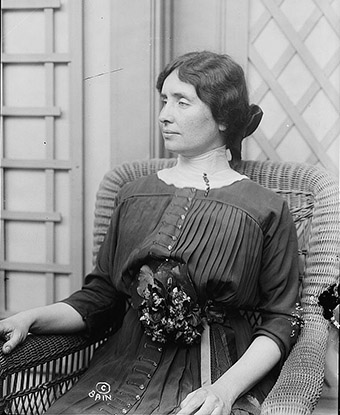
Photo by Bain News Service. From the collections of the Library of Congress.
Helen Keller was born to a prominent family in Tuscumbia, Alabama in 1880.[1] When she was nineteen months old, Keller lost her ability to see and hear. As part of their efforts to communicate with Helen, her parents Arthur and Catherine Keller turned to the Perkins School for the Blind, based in Watertown, Massachusetts. A Perkins graduate named Anne Sullivan was sent to the Keller home to train Helen in her seventh year. Sullivan famously taught Keller to read braille and in time, Keller was able to communicate through both sign language and aural speech.
Following the completion of her studies at the Cambridge School for Young Ladies, Keller enrolled at Radcliffe College. While completing her collegiate studies, Keller wrote her autobiography, The Story of My Life , first published in 1904.[2] All of her work as student and author was done in conjunction with Sullivan, who became a lifelong friend.
A self-described “militant suffragette,” Keller used the considerable notoriety she gained in her adolescence to advocate for others for the rest of her life. In 1913, Keller participated in the large parade known as the “Woman Suffrage Procession” in Washington, DC. Her interest in women’s rights was rooted in her connections to contemporary labor movements. Keller was particularly interested in working people’s issues, including industrial safety standards, which led to membership in the Industrial Workers of the World (IWW). Keller’s radical politics also included supporting the movement to increase access to birth control for women. When a biographical film called Deliverance , which featured Keller, premiered in New York City, she joined with striking actors instead of attending.
Keller regularly gave lectures in support of the American Foundation for the Blind (AFB) to earn a living. Though she was interested in persons with disabilities, it is important to note the breadth of Keller’s interests. Later in life, Keller was particularly passionate and dedicated to global causes, including anti-imperialism. An anti-war philosopher and agitator, Keller protested World War I and later, World War II.
Over the course of her lifetime, Keller would become one of the world’s best-known people with a disability. A complex woman with a range of political affiliations, Keller is often remembered for her early triumphs. This early focus misses Keller’s evolution and the contributions she made to a variety of causes. Keller was born into affluence and comfort; she died nearly ninety years later a devoted revolutionary who had worked tirelessly to make the oppression of others better understood. Her ashes, as well of those of her companion, Anne Sullivan, are interred at the National Cathedral in Washington, DC.[3]
Notes: [1] Helen Keller was born at home. The property, which is listed on the National Register of Historic Places, is known as Ivy Green .
[2] The Story of My Life has been adapted for film and stage as The Miracle Worker .
[3] The National Cathedral was listed on the National Register of Historic Places on May 3, 1974. Anne Sullivan was the first woman whose remains were interred here.
Works Referenced: Helen Keller, The Story of My Life (New York: Double Day, Page & Co., 1904).
Helen Keller, Out of the Dark: Essays, Lectures, and Addresses on Physical and Social Vision (New York: Doubleday, Page and Company, 1920).

You Might Also Like
- women's history
- disability history
- labor history
- medical history
- civil rights
- voting rights
- american heroes
- 20 for 2020
- alabama history
- washington d.c.
Last updated: July 15, 2020
Biography of Helen Keller, Deaf and Blind Spokesperson and Activist
Hulton Archive/Getty Images
- People & Events
- Fads & Fashions
- Early 20th Century
- American History
- African American History
- African History
- Ancient History and Culture
- Asian History
- European History
- Latin American History
- Medieval & Renaissance History
- Military History
- Women's History
- B.A., English Literature, University of Houston
Helen Adams Keller (June 27, 1880–June 1, 1968) was a groundbreaking exemplar and advocate for the blind and deaf communities. Blind and deaf from a nearly fatal illness at 19 months old, Helen Keller made a dramatic breakthrough at the age of 6 when she learned to communicate with the help of her teacher, Annie Sullivan. Keller went on to live an illustrious public life, inspiring people with disabilities and fundraising, giving speeches, and writing as a humanitarian activist.
Fast Facts: Helen Keller
- Known For : Blind and deaf from infancy, Helen Keller is known for her emergence from isolation, with the help of her teacher Annie Sullivan, and for a career of public service and humanitarian activism.
- Born : June 27, 1880 in Tuscumbia, Alabama
- Parents : Captain Arthur Keller and Kate Adams Keller
- Died : June 1, 1968 in Easton Connecticut
- Education : Home tutoring with Annie Sullivan, Perkins Institute for the Blind, Wright-Humason School for the Deaf, studies with Sarah Fuller at the Horace Mann School for the Deaf, The Cambridge School for Young Ladies, Radcliffe College of Harvard University
- Published Works : The Story of My Life, The World I Live In, Out of the Dark, My Religion, Light in My Darkness, Midstream: My Later Life
- Awards and Honors : Theodore Roosevelt Distinguished Service Medal in 1936, Presidential Medal of Freedom in 1964, election to the Women's Hall of Fame in 1965, an honorary Academy Award in 1955 (as the inspiration for the documentary about her life), countless honorary degrees
- Notable Quote : "The best and most beautiful things in the world cannot be seen, nor touched ... but are felt in the heart."
Early Childhood
Helen Keller was born on June 27, 1880, in Tuscumbia, Alabama to Captain Arthur Keller and Kate Adams Keller. Captain Keller was a cotton farmer and newspaper editor and had served in the Confederate Army during the Civil War . Kate Keller, 20 years his junior, had been born in the South, but had roots in Massachusetts and was related to founding father John Adams .
Helen was a healthy child until she became seriously ill at 19 months. Stricken with an illness that her doctor called "brain fever," Helen was not expected to survive. The crisis was over after several days, to the great relief of the Kellers. However, they soon learned that Helen had not emerged from the illness unscathed. She was left blind and deaf. Historians believe that Helen had contracted either scarlet fever or meningitis.
The Wild Childhood Years
Frustrated by her inability to express herself, Helen Keller frequently threw tantrums that included breaking dishes and even slapping and biting family members. When Helen, at age 6, tipped over the cradle holding her baby sister, Helen's parents knew something had to be done. Well-meaning friends suggested that she be institutionalized, but Helen's mother resisted that notion.
Soon after the incident with the cradle, Kate Keller read a book by Charles Dickens about the education of Laura Bridgman. Laura was a deaf-blind girl who had been taught to communicate by the director of the Perkins Institute for the Blind in Boston. For the first time, the Kellers felt hopeful that Helen could be helped as well.
The Guidance of Alexander Graham Bell
During a visit to a Baltimore eye doctor in 1886, the Kellers received the same verdict they had heard before. Nothing could be done to restore Helen's eyesight. The doctor, however, advised the Kellers that Helen might benefit from a visit with the famous inventor Alexander Graham Bell in Washington, D.C.
Bell's mother and wife were deaf and he had devoted himself to improving life for the deaf, inventing several assistive devices for them. Bell and Helen Keller got along very well and would later develop a lifelong friendship.
Bell suggested that the Kellers write to the director of the Perkins Institute for the Blind, where Laura Bridgman, now an adult, still resided. The director wrote the Kellers back, with the name of a teacher for Helen: Annie Sullivan .
Annie Sullivan Arrives
Helen Keller's new teacher had also lived through difficult times. Annie Sullivan had lost her mother to tuberculosis when she was 8. Unable to care for his children, her father sent Annie and her younger brother Jimmie to live in the poorhouse in 1876. They shared quarters with criminals, prostitutes, and the mentally ill.
Young Jimmie died of a weak hip ailment only three months after their arrival, leaving Annie grief-stricken. Adding to her misery, Annie was gradually losing her vision to trachoma, an eye disease. Although not completely blind, Annie had very poor vision and would be plagued with eye problems for the rest of her life.
When she was 14, Annie begged visiting officials to send her to school. She was lucky, for they agreed to take her out of the poorhouse and send her to the Perkins Institute. Annie had a lot of catching up to do. She learned to read and write, then later learned braille and the manual alphabet (a system of hand signs used by the deaf).
After graduating first in her class, Annie was given the job that would determine the course of her life: teacher to Helen Keller. Without any formal training to teach a deaf-blind child, 20-year-old Annie Sullivan arrived at the Keller home on March 3, 1887. It was a day that Helen Keller later referred to as "my soul's birthday."
A Battle of Wills
Teacher and pupil were both very strong-willed and frequently clashed. One of the first of these battles revolved around Helen's behavior at the dinner table, where she roamed freely and grabbed food from the plates of others.
Dismissing the family from the room, Annie locked herself in with Helen. Hours of struggle ensued, during which Annie insisted Helen eat with a spoon and sit in her chair.
In order to distance Helen from her parents, who gave in to her every demand, Annie proposed that she and Helen move out of the house temporarily. They spent about two weeks in the "annex," a small house on the Keller property. Annie knew that if she could teach Helen self-control, Helen would be more receptive to learning.
Helen fought Annie on every front, from getting dressed and eating to going to bed at night. Eventually, Helen resigned herself to the situation, becoming calmer and more cooperative.
Now the teaching could begin. Annie constantly spelled words into Helen's hand, using the manual alphabet to name the items she handed to Helen. Helen seemed intrigued but did not yet realize that what they were doing was more than a game.
Helen Keller's Breakthrough
On the morning of April 5, 1887, Annie Sullivan and Helen Keller were outside at the water pump, filling a mug with water. Annie pumped the water over Helen's hand while repeatedly spelling “w-a-t-e-r” into her hand. Helen suddenly dropped the mug. As Annie later described it, "a new light came into her face." She understood.
All the way back to the house, Helen touched objects and Annie spelled their names into her hand. Before the day was over, Helen had learned 30 new words. It was just the beginning of a very long process, but a door had been opened for Helen.
Annie also taught her how to write and how to read braille. By the end of that summer, Helen had learned more than 600 words.
Annie Sullivan sent regular reports on Helen Keller's progress to the director of the Perkins Institute. On a visit to the Perkins Institute in 1888, Helen met other blind children for the first time. She returned to Perkins the following year and stayed for several months of study.
High School Years
Helen Keller dreamed of attending college and was determined to get into Radcliffe , a women's university in Cambridge, Massachusetts. However, she would first need to complete high school.
Helen attended a high school for the deaf in New York City, then later transferred to a school in Cambridge. She had her tuition and living expenses paid for by wealthy benefactors.
Keeping up with school work challenged both Helen and Annie. Copies of books in braille were rarely available, requiring that Annie read the books, then spell them into Helen's hand. Helen would then type out notes using her braille typewriter. It was a grueling process.
Helen withdrew from the school after two years, completing her studies with a private tutor. She gained admission to Radcliffe in 1900, making her the first deaf-blind person to attend college.
Life as a Coed
College was somewhat disappointing for Helen Keller. She was unable to form friendships both because of her limitations and the fact that she lived off campus, which further isolated her. The rigorous routine continued, in which Annie worked at least as much as Helen. As a result, Annie suffered severe eyestrain.
Helen found the courses very difficult and struggled to keep up with her workload. Although she detested math, Helen did enjoy English classes and received praise for her writing. Before long, she would be doing plenty of writing.
Editors from Ladies' Home Journal offered Helen $3,000, an enormous sum at the time, to write a series of articles about her life.
Overwhelmed by the task of writing the articles, Helen admitted she needed help. Friends introduced her to John Macy, an editor and English teacher at Harvard . Macy quickly learned the manual alphabet and began to work with Helen on editing her work.
Certain that Helen's articles could successfully be turned into a book, Macy negotiated a deal with a publisher and "The Story of My Life" was published in 1903 when Helen was only 22 years old. Helen graduated from Radcliffe with honors in June 1904.
Annie Sullivan Marries John Macy
John Macy remained friends with Helen and Annie after the book's publication. He found himself falling in love with Annie Sullivan, although she was 11 years his senior. Annie had feelings for him as well, but wouldn't accept his proposal until he assured her that Helen would always have a place in their home. They were married in May 1905 and the trio moved into a farmhouse in Massachusetts.
The pleasant farmhouse was reminiscent of the home Helen had grown up in. Macy arranged a system of ropes out in the yard so that Helen could safely take walks by herself. Soon, Helen was at work on her second memoir, "The World I Live In," with John Macy as her editor.
By all accounts, although Helen and Macy were close in age and spent a lot of time together, they were never more than friends.
An active member of the Socialist Party, John Macy encouraged Helen to read books on socialist and communist theory. Helen joined the Socialist Party in 1909 and she also supported the women's suffrage movement .
Helen's third book, a series of essays defending her political views, did poorly. Worried about their dwindling funds, Helen and Annie decided to go on a lecture tour.
Helen and Annie Go on the Road
Helen had taken speaking lessons over the years and had made some progress, but only those closest to her could understand her speech. Annie would need to interpret Helen's speech for the audience.
Another concern was Helen's appearance. She was very attractive and always well dressed, but her eyes were obviously abnormal. Unbeknownst to the public, Helen had her eyes surgically removed and replaced by prosthetic ones prior to the start of the tour in 1913.
Prior to this, Annie made certain that the photographs were always taken of Helen's right profile because her left eye protruded and was obviously blind, whereas Helen appeared almost normal on the right side.
The tour appearances consisted of a well-scripted routine. Annie spoke about her years with Helen and then Helen spoke, only to have Annie interpret what she had said. At the end, they took questions from the audience. The tour was successful, but exhausting for Annie. After taking a break, they went back on tour two more times.
Annie's marriage suffered from the strain as well. She and John Macy separated permanently in 1914. Helen and Annie hired a new assistant, Polly Thomson, in 1915, in an effort to relieve Annie of some of her duties.
Helen Finds Love
In 1916, the women hired Peter Fagan as a secretary to accompany them on their tour while Polly was out of town. After the tour, Annie became seriously ill and was diagnosed with tuberculosis.
While Polly took Annie to a rest home in Lake Placid, plans were made for Helen to join her mother and sister Mildred in Alabama. For a brief time, Helen and Peter were alone together at the farmhouse, where Peter confessed his love for Helen and asked her to marry him.
The couple tried to keep their plans a secret, but when they traveled to Boston to obtain a marriage license, the press obtained a copy of the license and published a story about Helen's engagement.
Kate Keller was furious and brought Helen back to Alabama with her. Although Helen was 36 years old at the time, her family was very protective of her and disapproved of any romantic relationship.
Several times, Peter attempted to reunite with Helen, but her family would not let him near her. At one point, Mildred's husband threatened Peter with a gun if he did not get off his property.
Helen and Peter were never together again. Later in life, Helen described the relationship as her "little island of joy surrounded by dark waters."
The World of Showbiz
Annie recovered from her illness, which had been misdiagnosed as tuberculosis, and returned home. With their financial difficulties mounting, Helen, Annie, and Polly sold their house and moved to Forest Hills, New York in 1917.
Helen received an offer to star in a film about her life, which she readily accepted. The 1920 movie, "Deliverance," was absurdly melodramatic and did poorly at the box office.
In dire need of a steady income, Helen and Annie, now 40 and 54 respectively, next turned to vaudeville. They reprised their act from the lecture tour, but this time they did it in glitzy costumes and full stage makeup, alongside various dancers and comedians.
Helen enjoyed the theater, but Annie found it vulgar. The money, however, was very good and they stayed in vaudeville until 1924.
American Foundation for the Blind
That same year, Helen became involved with an organization that would employ her for much of the rest of her life. The newly-formed American Foundation for the Blind (AFB) sought a spokesperson and Helen seemed the perfect candidate.
Helen Keller drew crowds whenever she spoke in public and became very successful at raising money for the organization. Helen also convinced Congress to approve more funding for books printed in braille.
Taking time off from her duties at the AFB in 1927, Helen began work on another memoir, "Midstream," which she completed with the help of an editor.
Losing 'Teacher' and Polly
Annie Sullivan's health deteriorated over several years' time. She became completely blind and could no longer travel, leaving both women entirely reliant on Polly. Annie Sullivan died in October 1936 at the age of 70. Helen was devastated to have lost the woman whom she had known only as "Teacher," and who had given so much to her.
After the funeral, Helen and Polly took a trip to Scotland to visit Polly's family. Returning home to a life without Annie was difficult for Helen. Life was made easier when Helen learned that she would be taken care of financially for life by the AFB, which built a new home for her in Connecticut.
Helen continued her travels around the world through the 1940s and 1950s accompanied by Polly, but the women, now in their 70s, began to tire of travel.
In 1957, Polly suffered a severe stroke. She survived, but had brain damage and could no longer function as Helen's assistant. Two caretakers were hired to come and live with Helen and Polly. In 1960, after spending 46 years of her life with Helen, Polly Thomson died.
Later Years
Helen Keller settled into a quieter life, enjoying visits from friends and her daily martini before dinner. In 1960, she was intrigued to learn of a new play on Broadway that told the dramatic story of her early days with Annie Sullivan. "The Miracle Worker" was a smash hit and was made into an equally popular movie in 1962.
Strong and healthy all of her life, Helen became frail in her 80s. She suffered a stroke in 1961 and developed diabetes.
On June 1, 1968, Helen Keller died in her home at the age of 87 following a heart attack. Her funeral service, held at the National Cathedral in Washington, D.C., was attended by 1,200 mourners.
Helen Keller was a groundbreaker in her personal and public lives. Becoming a writer and lecturer with Annie while blind and deaf was an enormous accomplishment. Helen Keller was the first deaf-blind individual to earn a college degree.
She was an advocate for communities of people with disabilities in many ways, raising awareness through her lecture circuits and books and raising funds for the American Foundation for the Blind. Her political work included helping to found the American Civil Liberties Union and advocacy for increased funding for braille books and for women's suffrage.
She met with every U.S. president from Grover Cleveland to Lyndon Johnson. While she was still alive, in 1964, Helen received the highest honor awarded to a U.S. citizen, the Presidential Medal of Freedom, from President Lyndon Johnson .
Helen Keller remains a source of inspiration to all people for her enormous courage overcoming the obstacles of being both deaf and blind and for her ensuing life of humanitarian selfless service.
- Herrmann, Dorothy. Helen Keller: A Life. University of Chicago Press, 1998.
- Keller, Helen. Midstream: My Later Life . Nabu Press, 2011.
- Julia Ward Howe Biography
- Top 100 Women of History
- Helen Keller Quotes
- Biography of Patricia Bath, American Doctor and Inventor
- June Themes, Holiday Activities, and Events for Elementary Students
- Act 1 Plot Summary of Arthur Miller's "All My Sons"
- Teaching Students Identified with Interpersonal Intelligence
- Biography of Sharpshooter Annie Oakley
- Life and Work of Anni Albers, Master of Modernist Weaving
- Helen of Troy in the Iliad of Homer
- Biography of Hilda Doolittle, Poet, Translator, and Memoirist
- Helen Pitts Douglass
- Banned Books: History and Quotes
- Biography of Annie Jump Cannon, Classifier of Stars
- Annie Besant, Heretic
- Overview of the Children of Helen of Troy
Helen Keller Biography
Helen keller (1880-1968).
Imagine that you couldn't see these words or hear them spoken. But you could still talk, write, read, and make friends. In fact, you went to college, wrote nearly a dozen books, traveled all over the world, met 12 U.S. presidents, and lived to be 87. Well, there was such a person, and she was born over a hundred years ago!
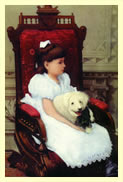
Meet Helen Keller, a woman from the small farm town of Tuscumbia, Alabama who taught the world to respect people who are blind and deaf. Her mission came from her own life; when she was 1 1/2, she was extremely ill, and she lost both her vision and hearing. It was like entering a different world, with completely new rules, and she got very frustrated. By the time she was 7, her parents knew they needed help, so they hired a tutor named Anne Sullivan.
Anne was strict, but she had a lot of energy. In just a few days, she taught Helen how to spell words with her hands (called the manual alphabet, which is part of the sign language that deaf people use). The trouble was, Helen didn't understand what the words meant—until one morning at the water pump (like an outdoor water fountain) she got a whole new attitude.
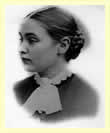
Anne had Helen hold one hand under the water. Then she spelled "W-A-T-E-R" into Helen's other hand. It was electric! The feeling turned into a word. Immediately, Helen bent down and tapped the ground; Anne spelled "earth." Helen's brain flew; that day, she learned 30 words.
Helen Keller reading a braille book From then on, Helen's mind raced ahead. She learned to speak when she was ten by feeling her teacher's mouth when she talked. Often people found it hard to understand her, but she never gave up trying. Meanwhile, she learned to read French, German, Greek, and Latin in braille! When she was 20, she entered Radcliffe College, the women's branch of Harvard University. Her first book, called The Story of My Life, was translated into 50 languages. (She used two typewriters: one regular, one braille.) She wrote ten more books and a lot more articles! How did she find the time?
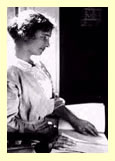
Helen also did research, gave speeches, and helped raise money for many organizations, such as the American Foundation for the Blind and the American Foundation for the Overseas Blind, which is now called Helen Keller Worldwide. From 1946 and 1957, she went around the world, speaking about the experiences and rights of people who are blind. She wound up visiting 39 countries on five different continents! Helen also inspired many works of art, including two Oscar-winning movies, and received dozens of awards, such as the Presidential Medal of Freedom, the highest honor that an American civilian can receive. She died in her sleep in 1968.
Helen became an exceptional leader, once she saw the potential in her own mind.
Helen Keller
- Occupation: Activist
- Born: June 27, 1880 in Tuscumbia, Alabama
- Died: June 1, 1968 in Arcan Ridge, Easton, Connecticut
- Best known for: Accomplishing much despite being both deaf and blind.

- Annie Sullivan was often called the "Miracle Worker" for the way she was able to help Helen.
- Helen became very famous. She met with every President of the United States from Grover Cleveland to Lyndon Johnson . That's a lot of presidents!
- Helen starred in a movie about herself called Deliverance . Critics liked the movie, but not a lot of people went to see it.
- She loved dogs. They were a great source of joy to her.
- Helen became friends with famous people such as the inventor of the telephone Alexander Graham Bell and the author Mark Twain .
- She wrote a book titled Teacher about Annie Sullivan's life.
- Two films about Helen Keller won Academy Awards. One was a documentary called The Unconquered (1954) and the other was a drama called The Miracle Worker (1962) starring Anne Bancroft and Patty Duke.
- Listen to a recorded reading of this page:
Back to Biography for Kids
Have Fun With History
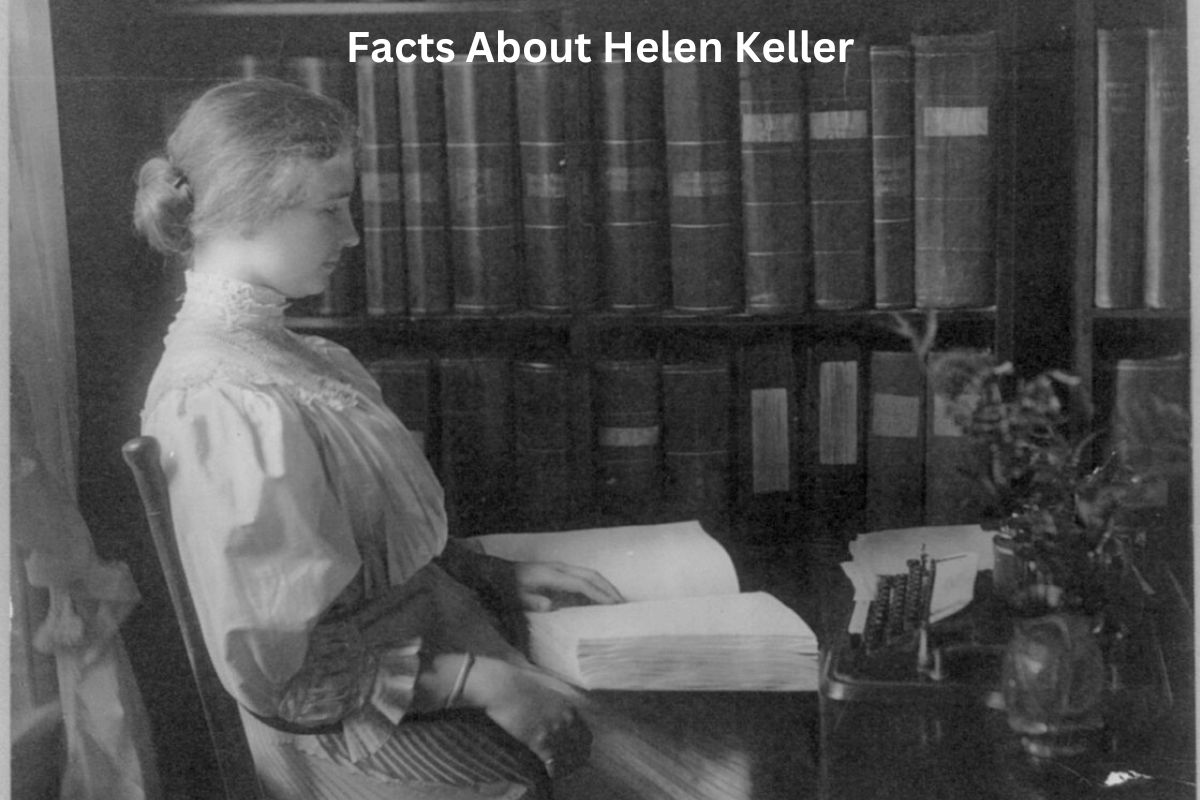
13 Facts About Helen Keller
Helen Keller, born in 1880, faced extraordinary challenges when she lost her sight and hearing at 19 months old due to illness. With the guidance of her teacher, Anne Sullivan, Keller learned to communicate through tactile sign language, opening up a new world for her.
Her determination led her to graduate with honors from Radcliffe College in 1904, making her the first deaf-blind person to earn a Bachelor of Arts degree. Keller’s autobiography, “The Story of My Life,” detailed her remarkable journey.
Beyond academics, Keller became a passionate advocate. She tirelessly championed disability rights, education, and improved living conditions for people with disabilities. Her global travels and speeches inspired countless people.
Keller’s advocacy extended to broader issues like women’s suffrage, labor rights, and pacifism. Her socialist beliefs drove her involvement in the Socialist Party of America and co-founding the American Civil Liberties Union (ACLU) in 1920.
Her life story remains a beacon of hope, demonstrating the power of resilience, education, and activism in overcoming adversity and creating lasting change.
Helen Keller Facts
1. born on june 27, 1880, in alabama, usa.
Helen Keller was born on June 27, 1880, in Tuscumbia, a small town in Alabama, USA. Her early childhood was typical until she fell seriously ill at 19 months old, possibly due to scarlet fever or meningitis.
Also Read: Helen Keller Accomplishments
This illness left her both deaf and blind, cutting her off from the world of communication and understanding that most people take for granted.
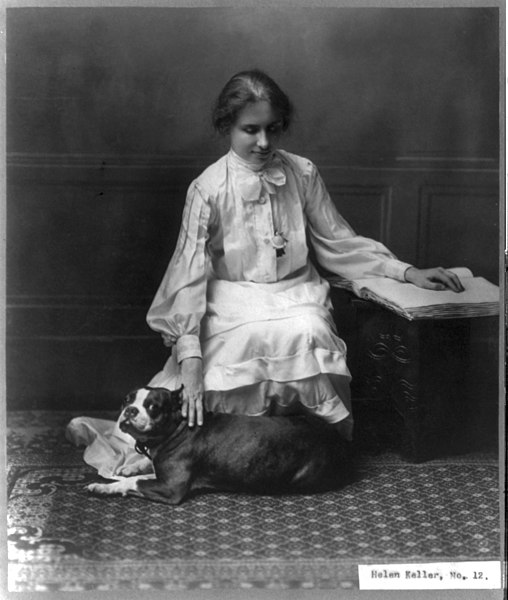
2. Lost her sight and hearing at 19 months due to illness
The loss of her sight and hearing dramatically changed Keller’s life. Deprived of these senses, she became frustrated and isolated, unable to understand or engage with the people and environment around her.
This isolation created immense challenges for both Helen and her family, who struggled to find a way to connect with her.
3. Learned to communicate through touch and sign language with the help of Anne Sullivan
Keller’s life took a transformative turn when Anne Sullivan, a skilled and determined teacher, entered her life. Sullivan had experience working with visually impaired individuals and was herself visually impaired for some time.
Also Read: Timeline of Helen Keller
Through sheer determination, patience, and a groundbreaking approach to education, Sullivan taught Keller to communicate using a manual alphabet, which involved spelling words into Keller’s hand.
One of the most pivotal moments in Keller’s life occurred when Sullivan famously pumped water onto one of Keller’s hands while repeatedly spelling the word “water” into her other hand.
This breakthrough connected the tactile sign language Sullivan was teaching with the concept of language itself. Keller quickly grasped the connection between the word and the flowing water, marking a pivotal moment of understanding and communication.
This incident showcased the potential for her to learn and communicate, providing her with a lifeline to the world around her.

4. Graduated with a Bachelor of Arts degree from Radcliffe College in 1904
Despite the immense challenges she faced, Helen Keller’s determination and hard work led her to achieve academic excellence. In 1904, she graduated with honors from Radcliffe College, becoming the first deaf-blind person to earn a Bachelor of Arts degree.
This accomplishment not only demonstrated her intellectual capabilities but also shattered preconceived notions about the potential of individuals with disabilities.
5. Wrote an autobiography called “The Story of My Life”
Keller’s autobiography, “The Story of My Life,” published in 1903, provided a poignant account of her struggles, triumphs, and the pivotal role of her teacher, Anne Sullivan, in her life.
The book became an international sensation, offering insight into her journey of learning and discovery. Through her writing, Keller not only chronicled her personal experiences but also advocated for the education and rights of people with disabilities.
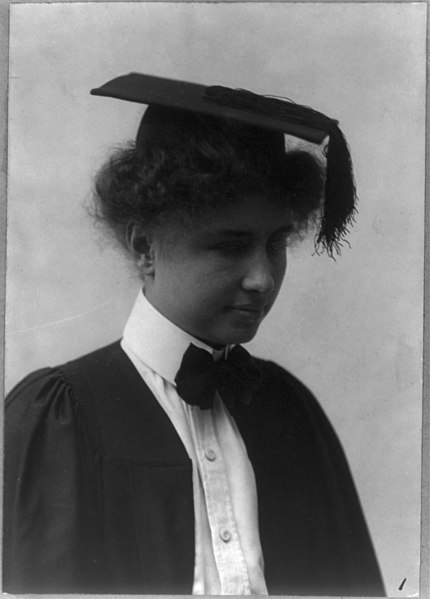
6. Advocated for disability rights and education
Helen Keller’s life took on a broader purpose beyond personal achievement. She became a passionate advocate for individuals with disabilities, focusing on the importance of education, accessibility, and understanding.
Her advocacy efforts aimed to dispel misconceptions about people with disabilities and promote inclusivity. Keller believed that education was the key to breaking down barriers and enabling individuals to reach their full potential.
7. Supported women’s suffrage and labor rights
Keller’s impact extended beyond the written word. She embarked on global tours, delivering inspiring speeches to diverse audiences. Her speeches covered a wide range of topics, from her personal experiences to broader societal issues.
Through her eloquence and ability to connect with people, Keller challenged societal norms, advocating for equality and social justice. Her ability to engage and captivate audiences transcended cultural and language barriers, leaving a lasting impression on all who heard her speak.
8. Traveled globally to give speeches on various topics
Helen Keller’s influence extended far beyond her local community. She embarked on journeys around the world, captivating audiences with her powerful speeches that covered a wide array of topics.
Her ability to connect with diverse cultures and people allowed her to spread her message of empowerment, understanding, and social change.
Keller’s speeches were not confined to a single theme; she addressed an array of subjects, including disability awareness, education, women’s suffrage, labor rights, pacifism, and social justice.
Her personal experiences and profound insights resonated with people from various backgrounds, inspiring them to reconsider their perceptions and challenge societal norms.
9. Member of the Socialist Party of America
Helen Keller’s advocacy extended beyond disability rights and education. She was deeply engaged in political and social issues of her time. Keller embraced socialist ideals and became an active member of the Socialist Party of America.
She believed that socialism’s focus on equality, workers’ rights, and social justice aligned with her broader vision for a more just and inclusive society.
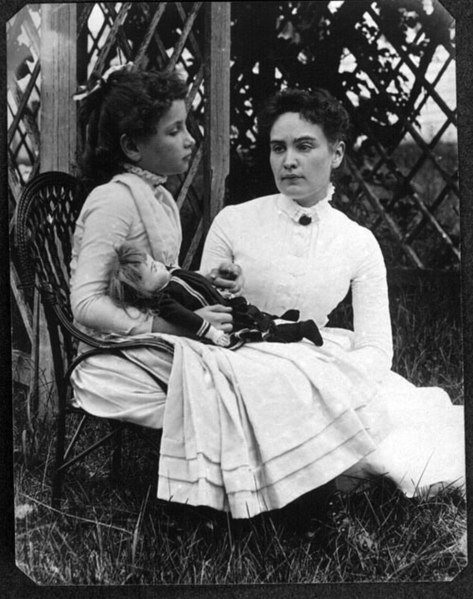
10. Co-founded the American Civil Liberties Union (ACLU) in 1920
Keller’s commitment to social justice and individual rights led her to be one of the founding members of the American Civil Liberties Union (ACLU) in 1920.
The ACLU was established to protect and defend the civil liberties and rights guaranteed by the U.S. Constitution. Keller’s involvement highlighted her dedication to advocating for the fundamental freedoms of all individuals, irrespective of their backgrounds or abilities.
11. Received the Presidential Medal of Freedom in 1964
Throughout her life, Helen Keller received numerous accolades and honors for her outstanding contributions. One of the most notable recognition’s came in 1964 when President Lyndon B. Johnson awarded her the Presidential Medal of Freedom, the highest civilian honor in the United States.
This award recognized her exceptional advocacy work, her impact on society, and her embodiment of the values of freedom and equality.
12. Met influential figures like Mark Twain and President Franklin D. Roosevelt
Keller’s compelling story and influential advocacy efforts brought her into contact with many renowned individuals of her time. She had a close friendship with the inventor Alexander Graham Bell , who was instrumental in her education.
Additionally, she corresponded with and met figures like Mark Twain and President Franklin D. Roosevelt, discussing topics ranging from literature to social issues. These interactions further amplified Keller’s impact and the reach of her message.
13. Symbol of triumph over adversity and the power of education
Helen Keller’s legacy extends far beyond her lifetime. Her life story remains a symbol of resilience, determination, and the power of education. She continues to inspire people worldwide to overcome obstacles, embrace empathy, and work towards positive change.
Her advocacy laid the groundwork for advancements in disability rights and education, contributing to a more inclusive society. Keller’s writings, speeches, and activism serve as a reminder that the pursuit of equality and justice requires perseverance, compassion, and a commitment to the well-being of all individuals.
A Short Biography of Helen Keller
Helen Keller (1880-1968) had passed away for more than half a century. However, she remains an inspiration to many people. Despite being deafblind, Helen Keller became one of the leading advocates of her time for people with disabilities. Learn more about Helen Keller’s life, family, education, literary works, and political activities in this short biography.
Helen Keller Short Biography
Early years – birth & family, helen adams keller was born a healthy child on june 27, 1880, in tuscumbia, alabama to a distinguished southern family..
Helen Keller’s father Arthur Henley Keller was an editor of the Tuscumbia North Alabamian. During the American Civil War, he had served as a captain in the Confederate Army. Helen Keller’s mother Catherine Everett Keller was a young educated woman from Memphis. She was the daughter of Charles W. Adams, a Confederate Army general. Helen Keller had four siblings: two full siblings and two half-siblings from her father’s previous marriage. Helen Keller was born in Ivy Green — a homestead built by her grandfather — where she spent her early childhood. The family homestead was also where she first met her mentor and life companion Anne Sullivan.
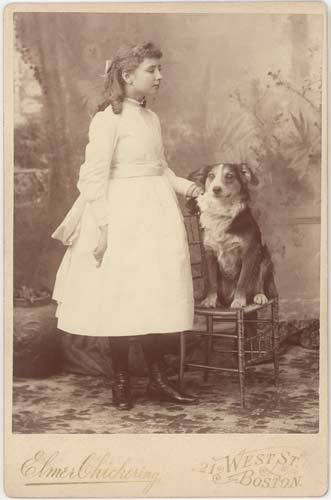
Early Years – Becoming Deafblind
When helen keller was 19 months old, she contracted an unknown illness that left her both deaf and blind..
In her autobiography The Story of My Life , she described that deafblindness left her living “at sea in a dense fog.” People suspect today that she might have contracted either scarlet fever or spinal meningitis . Despite her disabilities, Keller was able to communicate somewhat with Martha Washington, the six-year-old daughter of the family cook. Martha was able to distinguish some of Keller’s signs and communicate with her through their very own language system. By the age of seven, Helen Keller had developed over 60 hand gestures of her own . She was also able to identify her family members by the vibrations of their steps on the floor.
Early Education
In 1886, after reading charles dickens’ american notes, helen keller’s mother was inspired to pursue formal education for her daughter..
Helen Keller’s parents, Catherine and Arthur Keller set about finding the appropriate institution to educate their child. Through this journey, they ended up in contact with the Perkins School for the Blind . The director of the school recommended that a former student by the name of Anne Sullivan would be an ideal choice for helping Keller. The two would work closely together for the rest of Anne’s life.
Anne Mansfield Sullivan
One of helen keller’s constant companion in life. anne sullivan played crucial roles as the teacher and supporter in keller’s life..
On March 5th, 1887, Anne Sullivan arrived at Keller’s home. Keller called the day of Sullivan’s arrival as the “birthday of her soul”. Anne Sullivan began to teach Helen to spell words by writing into her hand. They struggled with this method it first until they made a breakthrough. Sullivan was signing the word for water into Keller’s hand while running her other hand under running water. This is the first instance that Helen Keller recalled understanding that the signs Anne Sullivan made were connected to real-world objects. This moment can be seen as awakening Helen’s desire to learn and interact with the world around her.
Throughout the years, Helen had her companion Anne at her side helping her through the world. Anne Sullivan died in 1936 with Helen at her side.

Formal Education
By 1888, Helen Keller had become a student at the Perkins Institute. By 1894, she was attending school at Wright-Humason School for the Deaf. And by 1900, Helen was attending Radcliffe College — a women’s liberal arts college in Cambridge, Massachusetts. Helen wanted to go to Harvard, but Harvard was an all-male university during her time. So she went to Radcliffe instead, which was the female coordinate institution for Harvard College . When Helen Keller graduated from Radcliffe in 1904, she became the first deaf-blind person ever to be awarded a Bachelor of Arts degree . Despite her circumstances, Keller showed a great aptitude for learning. She also demonstrated an unyielding desire to further her abilities.
Her quest to learn did not end here. Over the next few years, she would learn to use her physical voice. She discovered ways to experience music through the use of a resonant table to feel the vibrations of songs. She could even lip-read by touching the lips of a person who is speaking to her; her heightened sense of touch allowed her to know what was being said.

Literary Works
Some of helen keller’s contributions to society are her literary works..
Helen Keller was a prolific writer. She produced many works on her experiences as a member of the deaf and blind communities. In total, she has published 12 books and written several articles.
Among her earliest works was a fictional story The Frost King (1891) which Keller wrote at the tender age of 11. However, there were allegations that the story had been plagiarized. Perhaps shunted by the accusations, The Frost King became the last fictional story Keller published.
At age 21, Helen Keller published The Story of My Life (1903), her first autobiography. In this book, she talked about the story of her life up to age 21. The autobiography was written when Keller was in college with the help of Anne Sullivan and her husband John Macy.
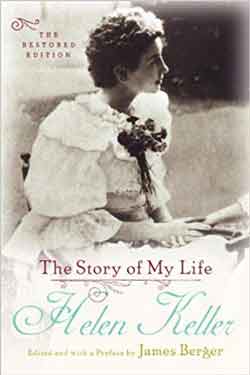
In 1908, she published The World I Live In. In this book, she shared with her readers some insights into her life. A series of essays on socialism (more on Keller’s involvement in advocating for socialism below) were published in 1913.
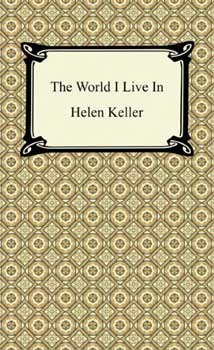
This is not an exhaustive list of Helen Keller’s works.
Social & Political Activities
Helen keller’s challenges in seeing and hearing did not prevent her from advocating for what she thought was right..
The year before Keller graduated from Radcliffe, she had published her autobiography The Story of My Life . After she graduated in 1904, she continued to inspire people with her life story. At the same time, Keller worked toward raising awareness on the challenges faced by people with disabilities. Helen Keller also testified in front of the US Congress as an advocate for the blind.
In 1915, Keller co-founded Helen Keller International (HKI) with George Kessler, a wealthy wine merchant from New York City. Still active to this very day, HKI is a non-profit organization exists to help people with blindness. Among HKI’s missions and goals are to reduce preventable blindness and reduce malnutrition.
Fiver years later, Helen Keller co-founded American Civil Liberties Union (ACLU). Like HKI, ACLU remains active to this day. It is one of the largest non-profit non-partisan activist organization in the US. ACLU’s stated mission is to defend the liberties and individual rights of the citizens of the United States of American.
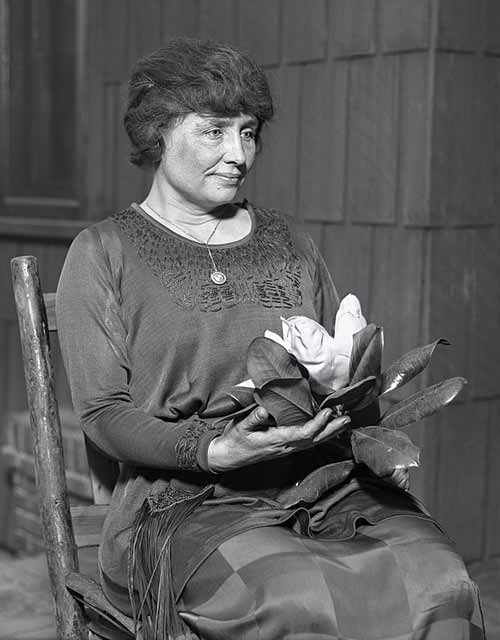
Keller’s effort was not limited within the United States borders. During her active years, she was known to have visited 35 countries and gave inspirational speeches that brought awareness. Among the countries that Keller had visited was Japan. It was said that Keller was a favorite of the Japanese people .
As an outspoken activist who dared to stand for what she thought was right, it’s only natural that she was active in the women’s suffrage movement. The movement fought for equal voting rights for both men and women.
Keller also believed in socialism. She was a member of the Socialist Party and advocated for a revolution. Federal Bureau of Investigation FBI even opened an investigation into her. Her advocacy for socialism is often downplayed in mainstream media. However, the fact is that socialism is a core part of Keller’s political philosophy. She even produced a number of essays on the topic of socialism.
In her later life, Keller devoted much of her time and effort to raising fund for the American Foundation for the Blind .
Later Life & Death
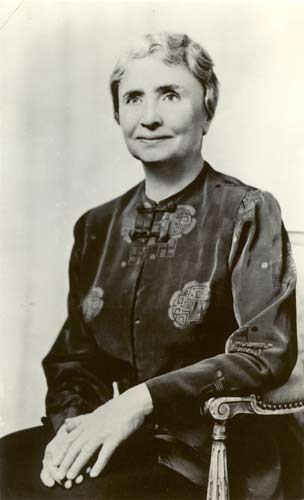
In 1961 Keller suffered a series of strokes. As a result, she had to spend the last few years of her life at her home. In 1964, Helen Keller was awarded the Presidential Medal of Freedom by President Lyndon B. Johnson. The award was one of the United State’s two highest civilian honors. The medal is awarded to distinguished individuals who have made significant contributions to the United States. The recipients of this medal include John F. Kennedy, Pope John XXIII, and Mother Theresa.
On June 1, 1968, she died in her sleep at her home in Connecticut. She was 87 years old when she passed on and was a few weeks short of her eighty-eighth birthday. The symbol of perseverance found her final resting place at the Washington National Cathedral in Washington, D.C. next to her constant companions, Anne Sullivan and Polly Thomson.
Using her voice and her experiences, Keller shared her thoughts on social and political issues. Today she is an iconic figure who is known to have labored for the betterment of others despite her own disabilities.
Quick Facts About Helen Keller
- Birthday: June 27, 1880
- Birth Place: Tuscumbia, Alabama.
- Death Date: June 1, 1968
- Parents: Arthur Henley Keller, Catherine Everett Keller
- Number of siblings: 4
- Birthplace: Tuscumbia, Alabama
- Helen Keller was the first deaf-blind person to earn a Bachelor’s Degree.
- Education History: Perkins Institute, Wright-Humason School for the Deaf, Radcliffe College
- Notable Literary Works: The Frost King (1891, fiction), The Story of My Life (1903, autobiography), The World I Live In (1908), Out of the Dark, a series of essays on socialism (1913), My Religion (1927)
- Related Organizations: Helen Keller International (Co-founder), American Civil Liberties Union ACLU (Co-founder)
You should also check out these interesting facts about Helen Kellers .
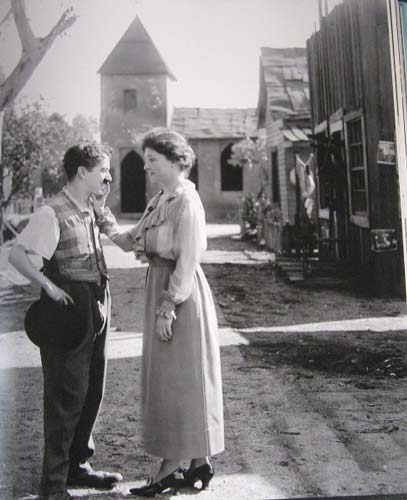
- FBI File on Helen Keller
- Helen Keller’s Digital Photo Collection
- A longer biography of Helen Keller @ American Foundation for the Blind
How Did Helen Keller Learn to Speak?
Helen Keller speaks out (1954)
Other Inspirational Women
11 Contemporary Female Painters
Share this article

Past Factory
Helen Keller's Life: A Tale of Incredible Inspiration
Posted: May 27, 2024 | Last updated: May 27, 2024
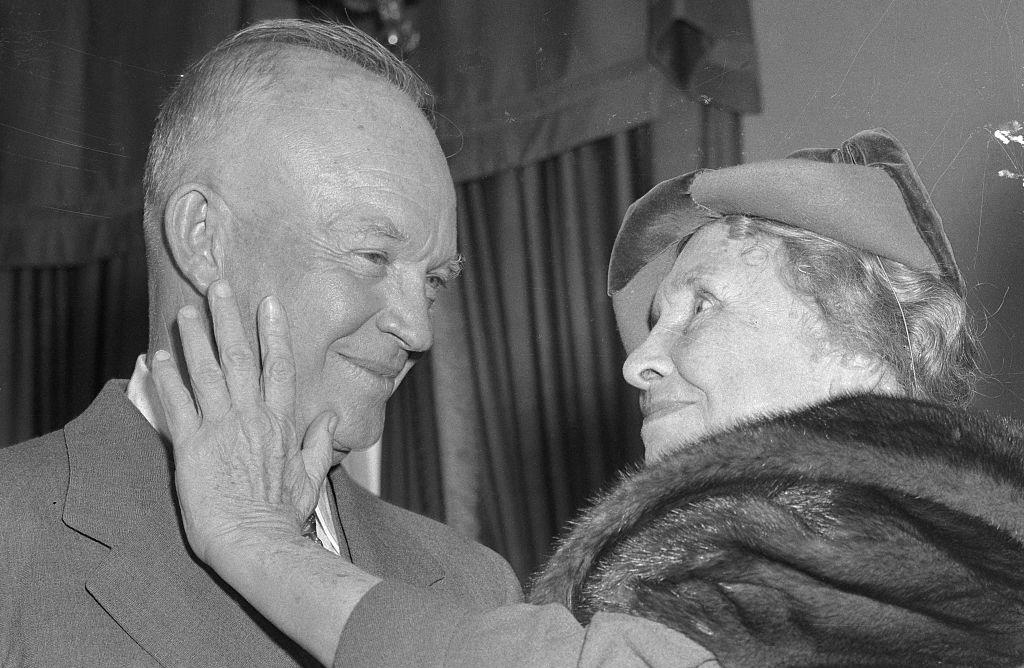
Born in Alabama in 1880, Helen Keller faced adversity from an extremely young age after losing her sight and hearing. However, her devotion to learning, guidance from others, and commitment to activism helped her become one of the most influential individuals of the 20th century.
Her entire life is a testament to the strength of the human spirit, as she was able to accomplish much more than most people, without the use of sight and hearing. Take an in-depth look into the incredible life of Helen Keller and what she managed to achieve without the senses many of us take for granted. Just keep reading in order to learn more.
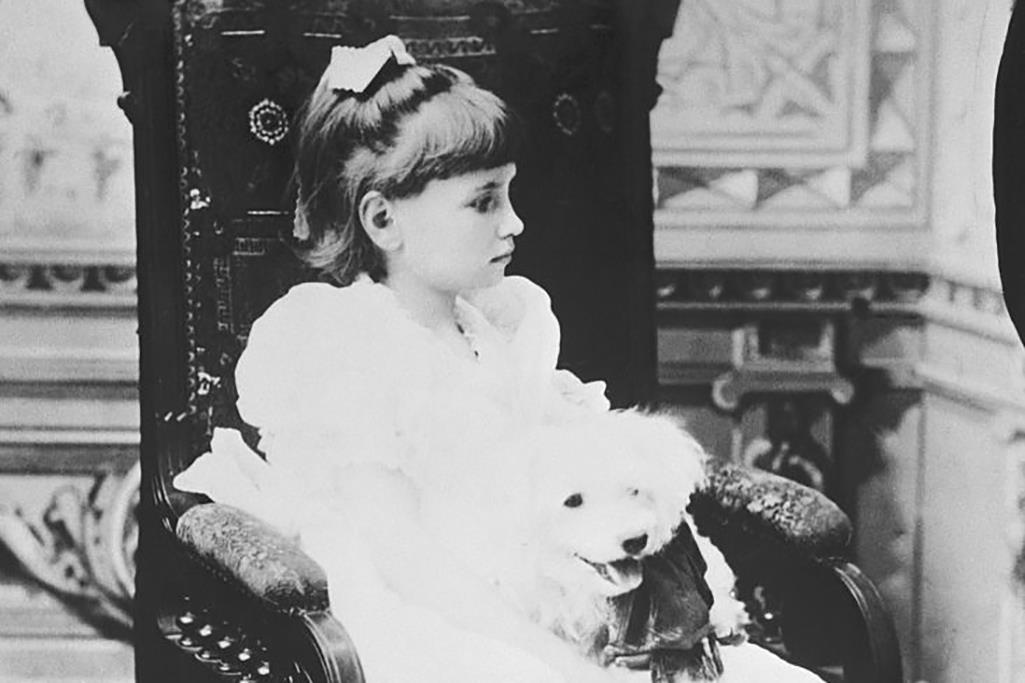
She Wasn't Born Disabled
Born in 1880, Helen Keller wasn't born blind and deaf. However, she fell ill at just 19 months old with what the doctors called "acute congestion of the stomach and the brain." Today, she most likely would have been diagnosed with Scarlet Fever or Meningitis. While both could have been treated with modern medicine, back then, the consequences were usually severe.
After Keller's fever eventually broke, her mother began to notice that she was no longer responding to sounds. After waving a hand in front of her face, she came to the shocking realization that Keller had lost both her eyesight and hearing.
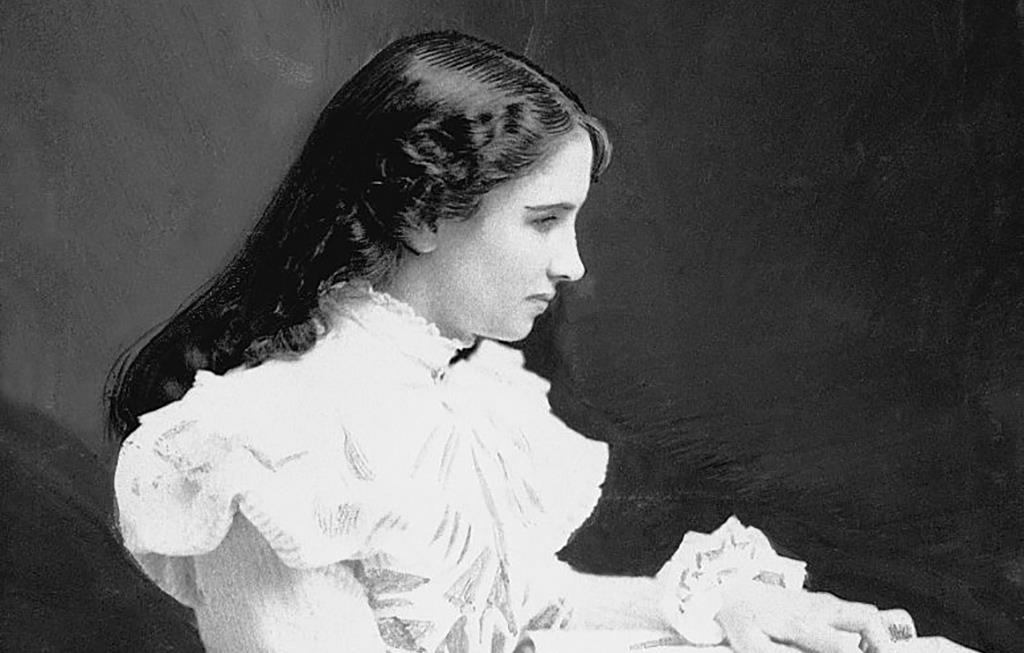
She Was Described As An Unruly Child
Considering her condition, as a young girl, Keller's behavior was often erratic and extreme. When angry, she would kick and scream in fits of rage, and if happy, would have uncontrollable laughing attacks. Many of her relatives believed that she should be placed in an institution.
As it turns out, this was due to her high intelligence paired with her inability to express herself, which became increasingly frustrating for her. She was so desperate to communicate that she had created her own form of sign language with her friend, Martha Washington. By the time she was seven, the two had invented more than 60 different signs.
Read More: Fascinating Historical Figures That We're Lucky To Have Photos Of
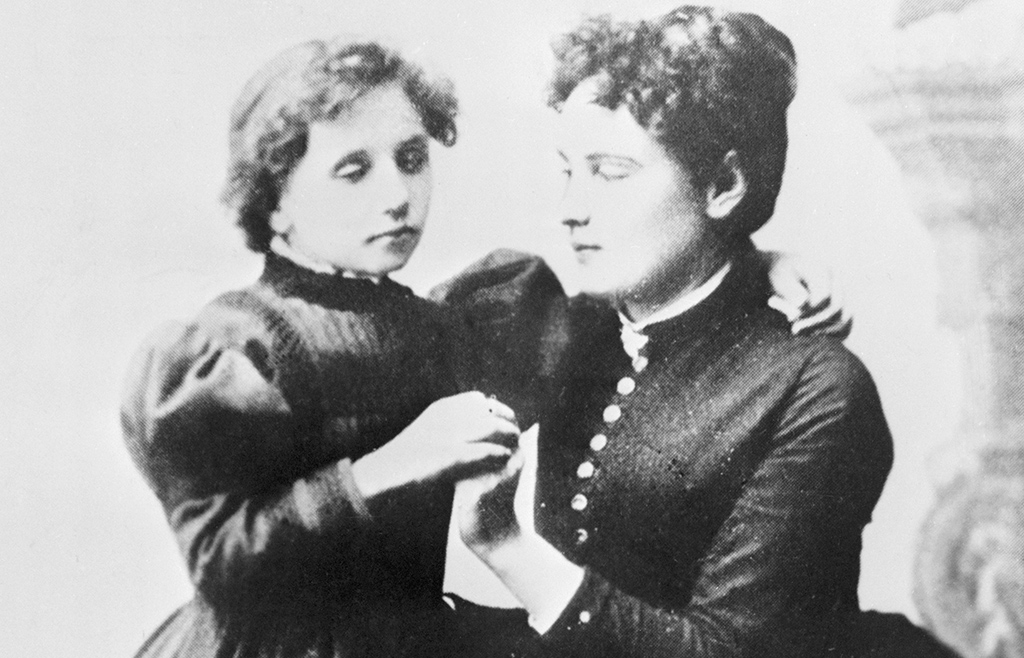
She Claims Her Life Began When She Was Seven Years Old
Once Keller became involved with Anne Sullivan, her mentor, and teacher, she believed her life truly began. Anne came into Keller's life in 1887 when she was seven years old, and Anne was 21. Anne was also visually impaired and had just graduated from school. Anne then began teaching Keller how to fingerspell, so she would be able to communicate with other people.
At first, it was challenging for Keller, but things finally fell into place after Anne put Keller's hand under the water pump and spelled out "water" on her hand. Supposedly, by the end of the night, she had learned 30 different words.
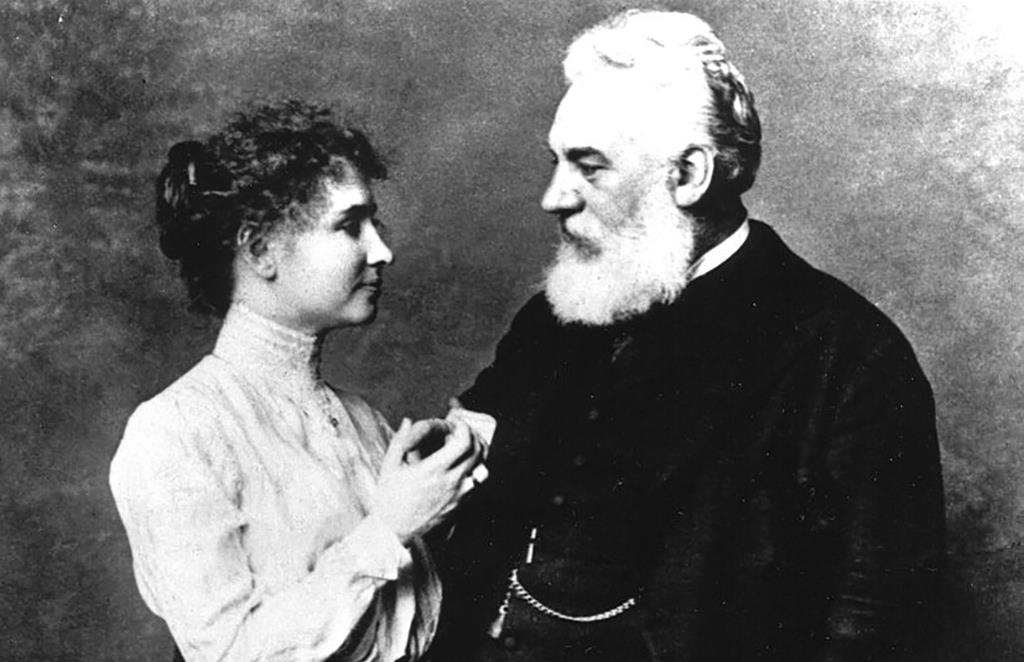
Alexander Graham Bell Was A Part Of Her Life
When Keller was just six years old, her parents took her to see Julian John Chisolm, Professor of Diseases of the Eye and Ear at the University of Maryland. He recommended that they take her to see Alexander Graham Bell, a famous inventor credited with creating the first telephone.
Bell's wife was deaf and he had established several schools for the deaf as a result and taught deaf students as well. Bell suggested that her parents enroll her at the Perkins Institution for the Blind. It was there Keller first met Sullivan, and along with Bell, they remained friends until his death in 1922.
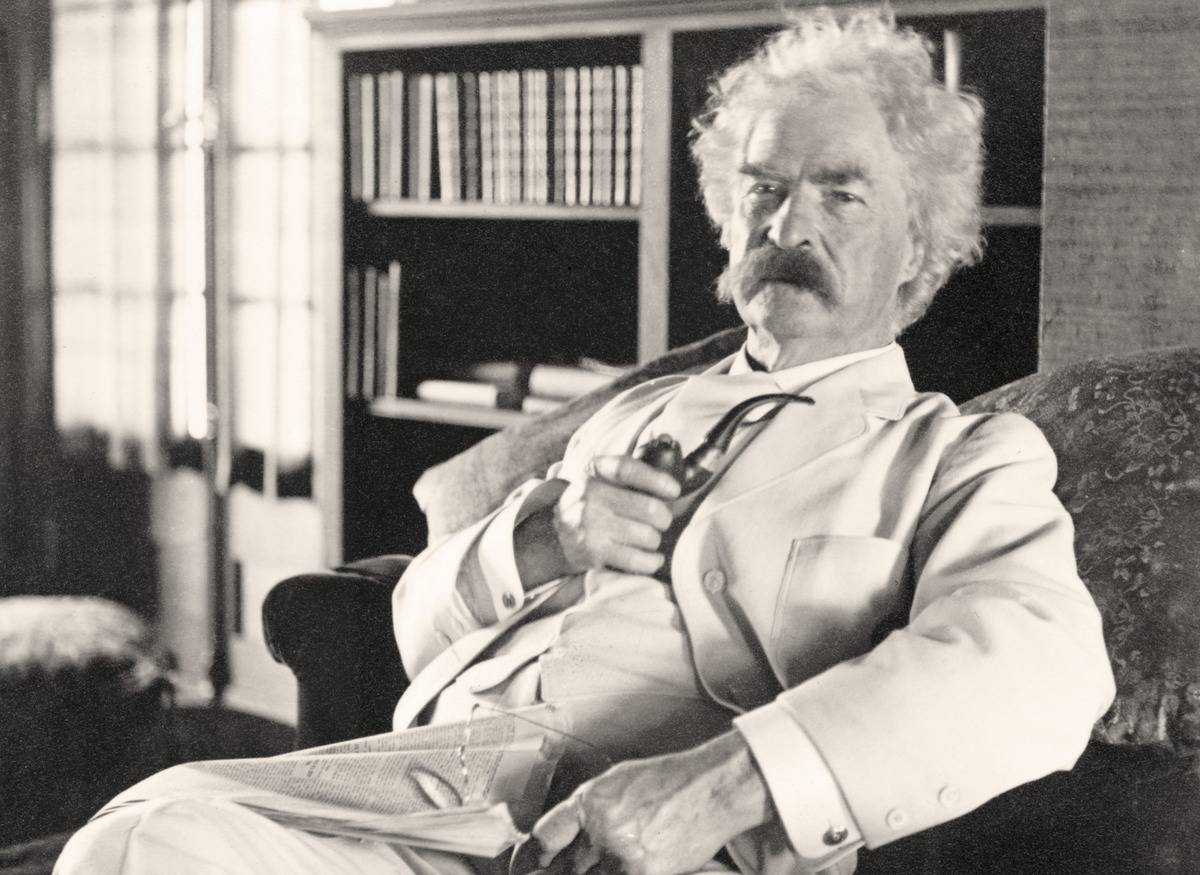
She Was Good Friends With Mark Twain
Keller met Mark Twain in 1895 as a teenager while attending Cambridge School for Young Ladies. The two met for lunch in New York with her recalling that he "treated me not as a freak, but as a handicapped woman seeking a way to circumvent extraordinary difficulties." The two bonded over similar political views and ideologies, as well as the fact that Twain had a daughter the same age as Keller.
Twain helped convince industrialist Henry Huttleston Rogers to pay for her education and was openly amazed by the work Anne Sullivan had managed to accomplish.
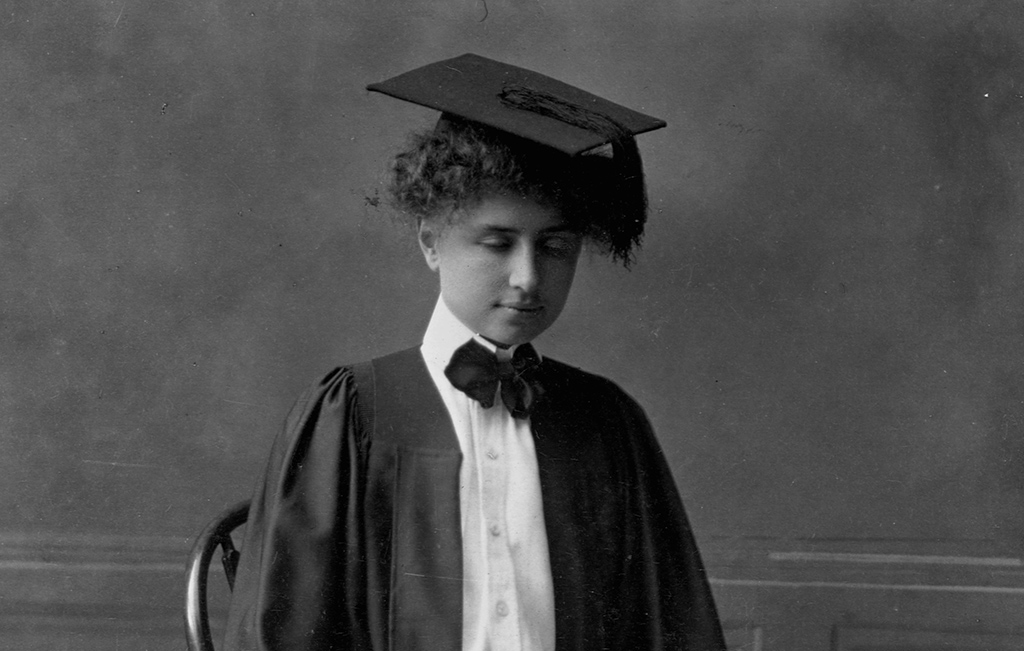
She Was The First Blind And Deaf Person To Graduate College
In 1900, Keller was accepted into the renown Radcliff College in Cambridge. Anne was accepted as well so she could attend her classes and help her along the way. Before entering school, she had learned to read peoples' lips using her fingers, as well as braille, typing, and finger spelling. Keller had also learned to speak although not as well as she would have liked.
By her junior year, she had written her autobiography, The Story of My Life. By 1904, not only had she written a book, but she also graduated with a Bachelor of Arts, making her the first blind and deaf student to ever attain a college degree.
She Was A Member Of the Socialist Party
Even though her father had been a captain in the Confederate Army during the Civil War, Keller's own beliefs were almost completely opposite. She became increasingly involved in politics and was a member of the Socialist Party, helping to found the American Civil Liberties Union or ACLU.
She had ultra far-left views and at one point, she was even under investigation by the FBI. Keller is known for her work regarding women's suffrage, worker's rights, and birth control. She also wrote essays about her admiration of Vladimir Lenin and his Socialistic ideals.
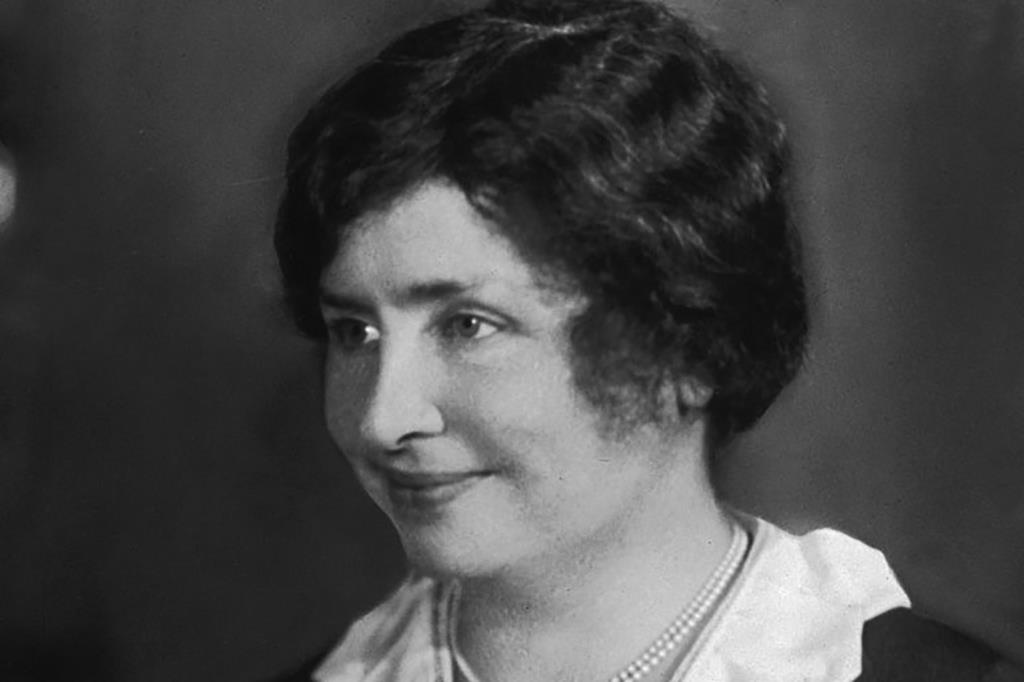
She Fell In Love With Her Secretary
In 1916, when Keller was 36 years old, she fell in love with Peter Fagan, a former newspaper reporter. Seven years her junior, Fagan was working as her temporary secretary during a period when Sullivan was sick. Fagan returned the feelings to Keller, and the two secretly became engaged and even took out a marriage license.
However, upon discovering their secret engagement, Keller's family forbade the marriage on account of her disabilities. Throughout her life, not marrying was one of her biggest regrets.
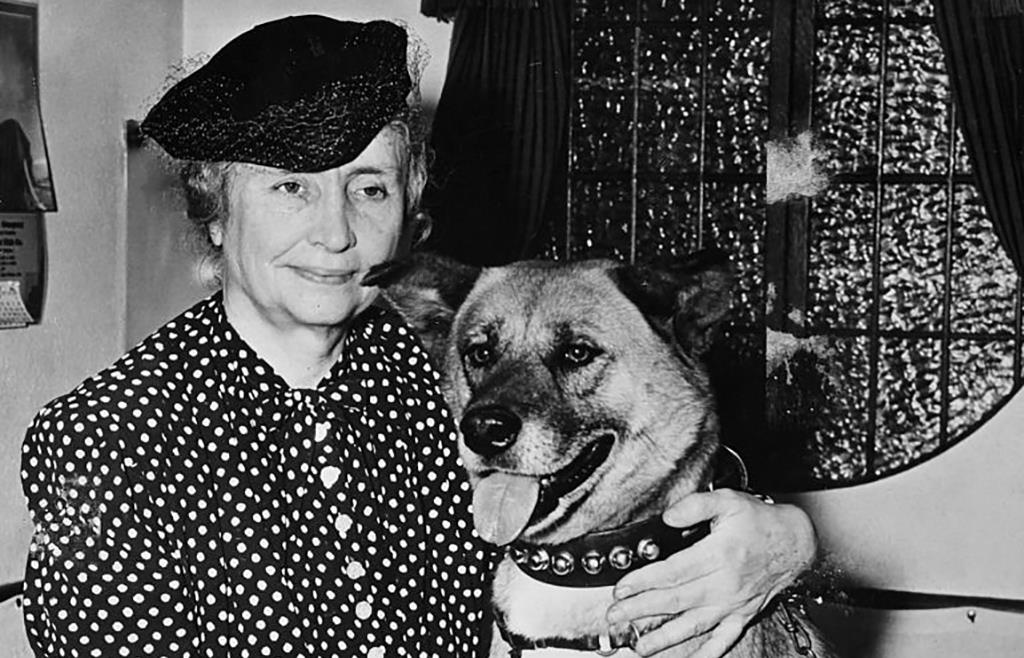
She Was The First Person To Bring The Akita Breed To The US
In the 1930s, Keller was touring around Japan visiting schools and making public appearances. She was a known animal lover, and a Japanese police officer gave her an Akita named Kamikaze-Go as a present. She immediately bonded with the dog, who unfortunately passed away not long before she returned to the United States.
Hearing that her dog died, the Japanese government gifted her another dog from the same litter and shipped it to the United States. This made Keller the first person to bring the dog breed into the U.S. After World War II, she returned to Japan once again to visit the disabled in military hospitals.
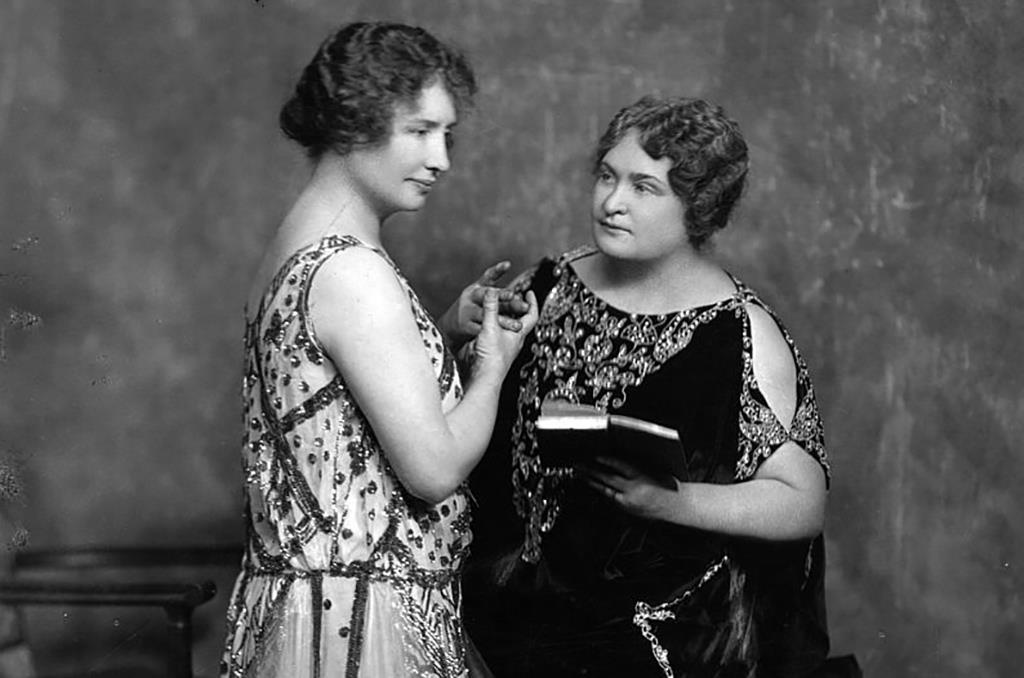
She Was Named The Eighth Wonder of The World
While Keller and Sullivan had become widely known to the public, they weren't making a comfortable living based on their earnings from Keller's lectures and writings. So, during the 1920s, the duo spent four years on the vaudeville circuit.
During that time, Keller would discuss her life and host Q&A sessions where audiences could ask questions and Sullivan would translate. People couldn't fathom the hardships she had managed to overcome.
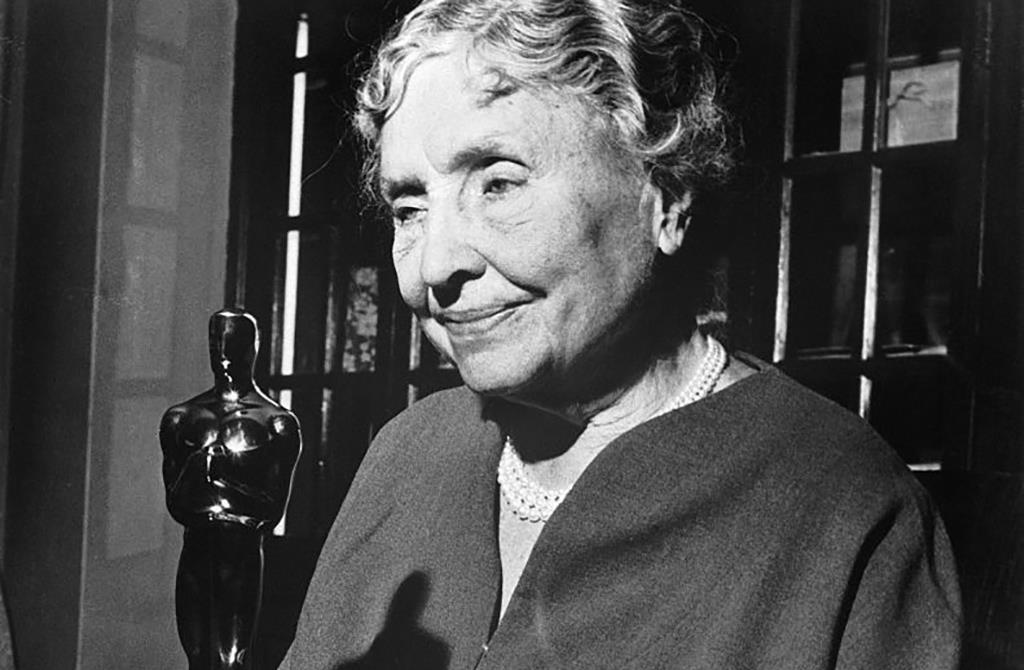
She's An Oscar Winner
In 1919, Keller starred in Deliverance, a film about herself. During that time, she became friendly with many Hollywood A-listers such as Charlie Chapman and other prominent individuals in the media industry. In 1955, at the age of 75, Keller accepted an Academy Award for the documentary about her life titled Helen Keller: In Her Story.
Of course, depictions of her life didn't stop there. The William Gibson play The Miracle Worker won the Pulitzer Prize in 1960 and was turned into a film two years later. Anne Bancroft won Best Actress for her performance as Sullivan, and Patty Duke won Best Supporting Actress for playing Keller.
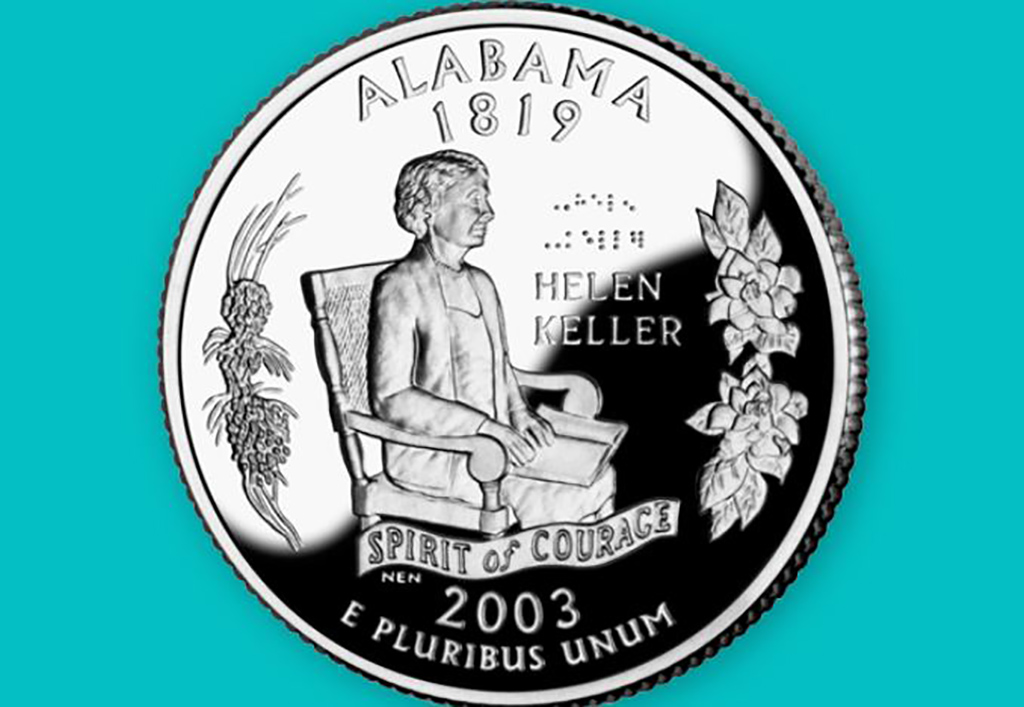
Her Likeness Is On A US Quarter
In 2003, as part of the 50 state quarters program, Keller's image was printed on the Alabama State quarter. On the quarter, Keller is depicted sitting in a rocking chair while reading a book in braille.
The coin was introduced in March 2003, with her name printed on the quarter in typical lettering as well as braille. Beneath the image of her is the phrase "Spirit of Courage." These coins were produced for just ten weeks and are now considered a collector's item.

Many Of Her Archives Were Destroyed
Although there is still a substantial amount of footage of Keller, as well as her works, there used to be much more. Unfortunately, much of her archival footage and other material was stored at the World Trade Center.
During the attack on September 11, almost all of it was lost in the destruction of the towers. Furthermore, the offices of Helen Keller Worldwide were located just a block away from the World Trade Centers, and they too were also destroyed in the wake of the attacks.
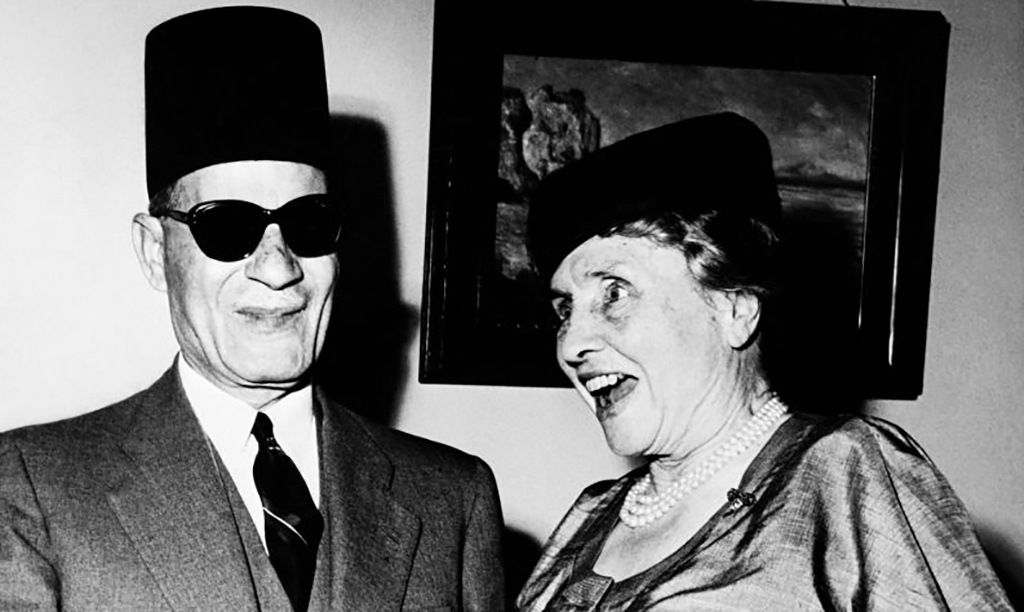
She Travelled Extensively
In 1946, Keller was appointed counselor of international relations for the American Foundation of Overseas Blind. In total, she went to 39 different countries throughout her life.
During her travels, she made it a point to advocate for educational policies for the disabled to the many world leaders that she encountered. She also particularly fell in love with the Middle East.

Keller And Sullivan Were Inseparable
From the time that Keller met Sullivan when she was just seven years old, the two became inseparable for the rest of their lives. Most likely, Keller would have been institutionalized without the help of Sullivan, who was there for her every step of the way. They spent their lives together from attending college, traveling the world, and leaving lasting impressions on people around the world.
When Sullivan passed away in 1936, Keller was next to her, holding her hand. Keller notes that the moment she met Sullivan was when her "soul was born." The two women are buried side-by-side at the Washington National Cathedral in Washington, D.C.
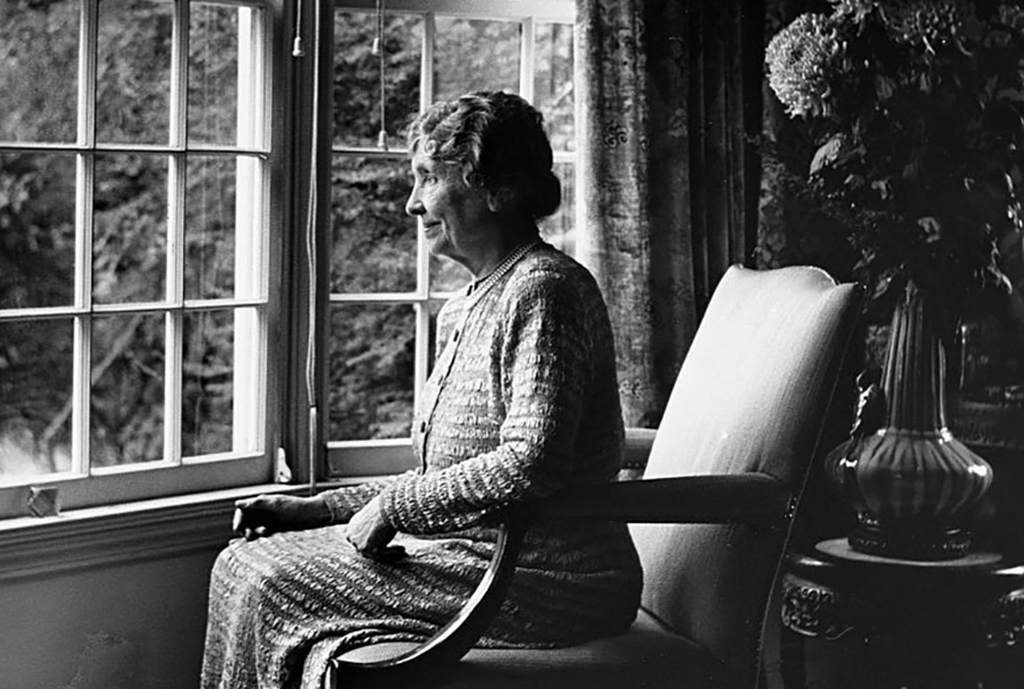
She Was Nominated For The Nobel Peace Prize
In 1952, Keller visited the Middle East where she met with political leaders about the rights of the blind and the disabled. In Egypt, she managed to convince the Minister of Education to establish secondary schools for the blind that would aid in them receiving college educations.
In Israel, Jerusalem's Helen Keller School was named in her honor. For her work, in 1953, Keller was nominated for the Nobel Peace Prize. However, the award went to George Catlett Marshall for his post-war work after World War II.
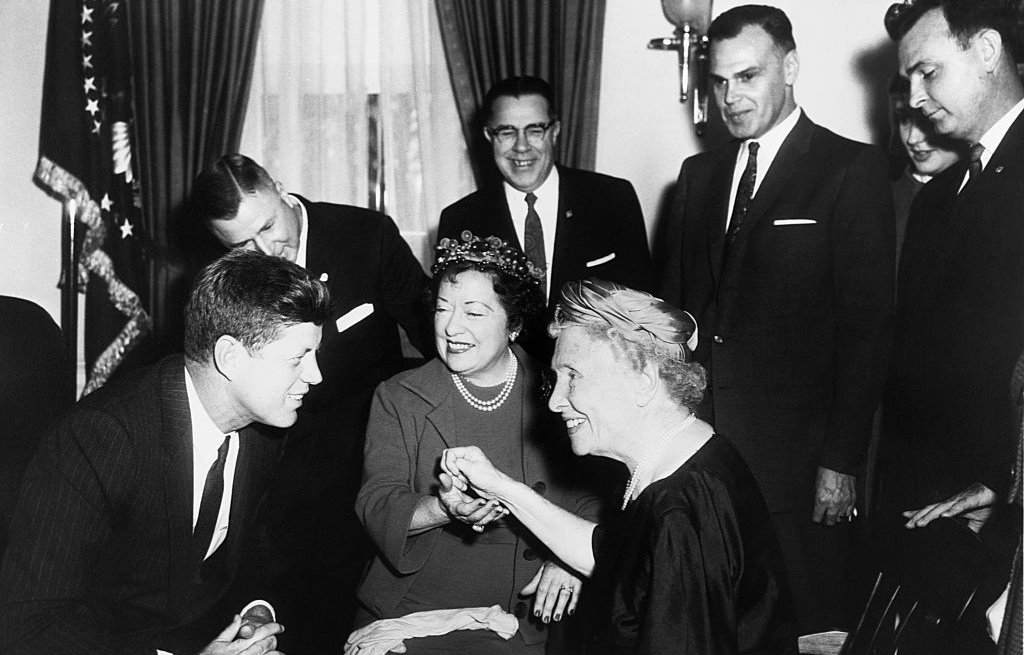
She Has An Impressive List Of Awards And Accolades
For a lifetime of hard work and activism, Keller was recognized on numerous occasions. In 1936 she received the Theodore Roosevelt Distinguished Sevice Medal, the Presidential Medal of Freedom in 1964, and election to the Women's Hall of Fame in 1965.
Moreover, Keller received honorary doctoral degrees from several universities both at home and abroad including Harvard University. She continued to be honored after her death in 1968, appearing on Time's 1999 list of the 100 most important figures of the 20th century, among other recognitions.
QUIZ: Most People Can't Identify These Iconic Historical Women. Can You?
More for You
Video Of Donald Trump Getting Booed Loudly During Speech Goes Viral
Where Are Jaycee Dugard and Her Daughters Today? A Look at Their Lives After Abduction
20 Hollywood Stars Who Disappeared from Sight
Scientists have finally solved a great mystery behind Easter Island's iconic statues
10 Fast-Food Sandwiches From the ’80s That Have Vanished
"Sign a five-year deal, get fired after two, and go golfing at the Bel-Air Club" – Paul Pierce on the benefits of being the coach of the Lakers
Donald Trump Handed Election Loss In Texas
‘My peers have 10 to 20 times more set aside for retirement’: I’m 67 and have $100,000 saved. I want to retire in three years. Can I do it?
The Only Major Actors Still Alive From The Carol Burnett Show
“It’s about something rooted in truth for me”: Taylor Sheridan’s Most Personal Film is the One That Became an ‘Accidental Western’ While Filming
Americans are finally catching on to Costco's tricks — here are 15 to watch out for so you don't get fleeced on your next trip
What Your Body Is Trying To Tell You if You Can Feel or Hear Your Own Heartbeat, According to Cardiologists
Texas Independence Referendum Moves One Step Closer
US Supreme Court justice rejects Trump case recusal demands
This Is the Average 401(k) Balance for Ages 55 to 64
Charles Barkley won’t let corporate honchos silence him over NBA rights deal: ‘I can talk to who I want to’
“I did 900 movies in a row”: Lea Thompson Felt She Couldn’t be a Movie Star Anymore After Back to the Future and Movie With Tom Cruise Because of Motherhood
Tech trick: How to tell who’s calling when you don’t recognize the phone number
The hail in Texas was so big Tuesday that it required a new description
One Donald Trump Juror Has Legal Expert Worried
- Today's news
- Reviews and deals
- Climate change
- 2024 election
- Fall allergies
- Health news
- Mental health
- Sexual health
- Family health
- So mini ways
- Unapologetically
- Buying guides
Entertainment
- How to Watch
- My watchlist
- Stock market
- Biden economy
- Personal finance
- Stocks: most active
- Stocks: gainers
- Stocks: losers
- Trending tickers
- World indices
- US Treasury bonds
- Top mutual funds
- Highest open interest
- Highest implied volatility
- Currency converter
- Basic materials
- Communication services
- Consumer cyclical
- Consumer defensive
- Financial services
- Industrials
- Real estate
- Mutual funds
- Credit cards
- Balance transfer cards
- Cash back cards
- Rewards cards
- Travel cards
- Online checking
- High-yield savings
- Money market
- Home equity loan
- Personal loans
- Student loans
- Options pit
- Fantasy football
- Pro Pick 'Em
- College Pick 'Em
- Fantasy baseball
- Fantasy hockey
- Fantasy basketball
- Download the app
- Daily fantasy
- Scores and schedules
- GameChannel
- World Baseball Classic
- Premier League
- CONCACAF League
- Champions League
- Motorsports
- Horse racing
- Newsletters
New on Yahoo
- Privacy Dashboard
Birmingham firm to develop Rosa Parks, Helen Keller statue sites at Alabama State Capitol
A working model for the Rosa Parks statue sits in front of the Alabama State Capitol in Montgomery on Oct. 11, 2023. The final version will stand at about 15 feet tall. (Alander Rocha/Alabama Reflector)
A state commission Tuesday selected an engineering firm to begin site development for the Rosa Parks and Helen Keller statues that will be erected on the Alabama State Capitol.
The Alabama Women’s Tribute Statue Commission selected MBA Engineers based in Birmingham to build the structural base for both statues.
“We’re really excited about the possibility of being involved in this project and love to help in any way we can,” said Keith Owens, president of MBA Engineers.
SUBSCRIBE: GET THE MORNING HEADLINES DELIVERED TO YOUR INBOX
Montgomery-based architectural firm SS&L Architects also submitted a request for the project, but some commission members didn’t think the firm understood “the lifecycle of the project,” as commission member Rev. Agnes Lover said.
SS&L Architects focused on past projects in their presentation and said they can provide 3D renderings for the commission to consider through the process.
Commission member Tracy Morant Adams that “the MBA firm seemed like they were more in tune to what our needs are and had a capacity to establish that.”
The commission also received an update on the Parks statue. Sculptor Julie Knight, an artist based in Georgia, worked with Birmingham-based Clark Memorials, which produces monuments and headstones, to design the granite base on which Parks will stand.
Knight said the statue and the base are finished, she said. Chase Tourney, a representative from Clark Memorials, said he’ll work with the firms to get the base installed.
The Parks statue will be installed on the steps of the Alabama State Capitol. Both Parks and Keller’s statues could go up in Montgomery early next year .
The statues are expected to cost about $611,000, according to previous projections. The commission has raised about $700,000 for the statues. The remaining amount will be used for site maintenance.
Oregon-based artist Jay Warren is sculpting the Helen Keller statute.
The Alabama Legislature in 2019 approved the installation of statues of Keller and Parks on the Alabama State Capitol grounds, the first women to be so honored. According to the commission website , both statues were to be unveiled in February 2023. Funding for Keller’s statue, expected to cost almost $300,000 ($245,000 for the sculpture and $50,000 for site preparation), was not clear until late last year .
Parks’ arrest on a segregated Montgomery bus in 1955 sparked the Montgomery Bus Boycott, considered the beginning of the modern Civil Rights Movement. Keller, a Tuscumbia native who lost her sight and hearing before her second birthday, became a world-renowned author and advocate for the rights of the disabled.
DONATE: SUPPORT NEWS YOU TRUST
The post Birmingham firm to develop Rosa Parks, Helen Keller statue sites at Alabama State Capitol appeared first on Alabama Reflector .
Recommended Stories
As a us ban looms, tiktok announces a $1m program for socially driven creators.
TikTok is pulling out all the stops to prevent its impending ban in the United States. Creators in the program will get support from TikTok, and on each creator's behalf, TikTok will donate $25,000 to a nonprofit of their choice. "This program enables us to connect with wider audiences, encouraging creativity for meaningful advocacy and health communication," said Alain Labrique, a director at the World Health Organization (WHO), in a statement.
Dolphins owner Stephen Ross reportedly declined $10 billion for team, stadium and F1 race
The value of the Dolphins and Formula One racing is enormous.
Benches clear as Red Sox's Chris Martin takes exception to Brewers bunting on him
An argument between Boston Red Sox reliever Chris Martin and Milwaukee Brewers first base coach Quintin Berry caused a bench-clearing confrontation at Fenway Park on Sunday.
Mets to reportedly DFA reliever Jorge López after he called them 'worst team in probably the whole f***ing MLB'
Things are going great in Queens.
Gen X is the 401(k) 'experiment generation.' Here's how that's playing out.
Nearly half of Gen Xers say their retirement savings are behind schedule, according to a new survey.
Rhode Island asking kei car owners to turn in their registration
Rhode Island is making it illegal to register a kei car, and it's asking enthusiasts who already have one to turn in their registration.
Charges against Scottie Scheffler dropped in police incident during PGA Championship
The World No. 1 is free of all charges stemming from a confrontation outside Valhalla Golf Club on May 17.
Lashinda Demus will get her Olympic gold medal ... 12 years later
Demus will receive her gold medal at a ceremony at the foot of the Eiffel Tower during the 2024 Summer Olympics.
Yankees' Juan Soto called out, Aaron Boone ejected on another bizarre infield fly interference play
Two runners have been called out for interference on an infield fly in the past week.
US consumers show the Fed its backward problem with high rates: Morning Brief
Consumer confidence rebounded in May, but there are signs this data is being driven by wealthier consumers enjoying the spoils of high rates, presenting a new challenge for the Fed.
2025 Ford Mustang GTD reveals the view into its ultra-cool 'suspension window'
Today, Ford revealed that the GTD will feature something it’s calling the “suspension window."
Lexi Thompson, 29, set to retire after the 2024 LPGA season
Thompson will be competing in her 18th straight U.S. Women's Open later this week.
Thunder GM Sam Presti admits he ‘missed’ on Gordon Hayward trade: ‘That’s on me’
Gordon Hayward said his short time with the Thunder was “disappointing” and “frustrating” after the mid-season trade landed him in Oklahoma City.
2025 Ford Expedition spy photos reveal major exterior overhaul
2025 Ford Expedition full-size SUV spy photos show a significantly changed exterior that takes cues from the recently updated F-150 pickup truck.
Umpire Ángel Hernández, after long and controversial run in Major League Baseball, set to retire
Ángel Hernández, by both fans and players alike, has long been considered one of the most hated umpires in Major League Baseball.
Caitlin Clark outplays Cameron Brink for career-high 30, but red-hot Sparks overwhelm Fever from long distance
Turnovers plagued Clark and the Fever again while the Sparks put on a clinic from beyond the 3-point arc.
Apple's new M2 iPad Air tablets drop to record-low prices
The new M2 iPad Air is on sale already, and some models are available for record-low prices.
Ex-Jaguars kicker Brandon McManus accused of sexual assault in lawsuit after alleged incident on team flight
Brandon McManus allegedly sexually assaulted two flight attendants on the team's charter flight to London for a game last season.
Dodgers snap longest losing streak in 5 years aided by late Mets blunders
The New York Mets were the cure for the ailing Los Angeles Dodgers.
5 things to know from the weekend in MLB: Here's how Braves are going to cope after Ronald Acuña's heartbreaking injury
A league without a fully operational Acuña is a less interesting, less enjoyable league. His absence will be loud.
Content Search
Pf no 2024-05-11 call for proposal for a consultant to analyze post-event coverage survey (pecs) and program implementation data, helen keller intl.
- Helen Keller International
Helen Keller International (Helen Keller Intl) is a nonprofit organization dedicated to saving and improving the sight and lives of the world's vulnerable by combatting the causes and consequences of blindness, poor health, and malnutrition.
For several decades, Helen Keller International has partnered with governments across multiple countries to ensure regular provision of life-saving vitamin A supplements (VAS) to children aged 6 to 59 months. In Africa, our organization supports governments in distributing VAS through three primary approaches: biannual mass campaigns, integration of VAS into routine health systems, or a combination of both strategies.
Post-Event Coverage Surveys (PECS) serve as our primary method for evaluating VAS coverage, validating administrative data, and assessing the quality of service delivery. In collaboration with governments, Helen Keller Intl conducts these surveys in 14 countries to support VAS initiatives. Since 2018, we have conducted more than 50 of surveys across these countries.
Additionally, we collect comprehensive data on program implementation activities. This data is indispensable for informed decision-making, aiming to enhance coverage, strengthen distribution platforms, and refine the quality of implementation as countries transition from event-based VAS delivery to routine supplementation.
Of particular interest to Helen Keller Intl is exploring how VAS program activities (planning & coordination, training, social mobilization, distribution, monitoring & supervision), type of distribution model, reasons for non-receipt of VAS, distance to and location of health facilities or distribution points, and other factors impact caregiver knowledge and access to services. Understanding these dynamics is crucial for uncovering the barriers and facilitators that influence VAS coverage.
Helen Keller Intl is currently seeking a skilled data analyst (consultant) to contribute to our mission by investigating the impact of program implementation activities on VAS coverage in 14 African countries. The successful candidate will be tasked with compiling, cleaning, and analyzing data from over 50 post-event coverage surveys conducted between 2018 and 2023, as well as program implementation data from 14 African countries over the same period. In this role, the analyst will explore the relationships between program implementation activities, socio-demographic factors, and other relevant variables affecting VAS coverage. The goal is to derive actionable insights and develop at least three scientific publications based on the findings.
The main tasks and responsibilities of the analyst include:
Data compilation and management:
- Gather and compile data from over 50 post-event coverage surveys (PECS) conducted in 14 African countries between 2018 and 2023.
- Collect and organize program implementation data from 14 African countries between 2018 and 2023.
- Develop a comprehensive database of PECS data and program implementation data with the possibility of linking the two databases, as needed.
Data cleaning and pre-processing:
- Clean and pre-preprocess the collected data to ensure accuracy and consistency.
- Develop a data dictionary for each database, including defining variables, labels, response options, etc.
- Develop data analysis plans for at least three unique analyses, including clear objective(s), variables to be analysed, the analysis to be conducted, and expected results.
Exploratory Data Analysis:
- Conduct exploratory data analysis to understand the dataset’s underlying patterns, trends, and relationships.
- Visualize key findings using appropriate graphs, charts, and summary statistics.
Statistical Analysis:
- Perform statistical analysis, including descriptive statistics, hypothesis testing, regression, and other advanced statistical analysis, as necessary.
- Identify significant factors and variables influencing the observed trends.
Interpretation:
- Interpret the results of the data analysis in the context of the research objectives and relevant literature.
Paper Drafting:
- Prepare a structured outline for each scientific paper, outlining the key sections and their content.
- Draft the introduction, methodology, results, discussion, and conclusion sections of each paper, adhering to the target journal's submission guidelines and formatting requirements.
- Incorporate relevant citations from existing literature to support the research findings and contextualize the study within the broader scientific community.
Revision and Finalization:
Review and revise the drafted papers based on feedback from the VAS regional team.
Finalize the papers for submission to scientific journals, including formatting adjustments and reference checks.
Deliverables:
Cleaned datasets.
Exploratory data analysis report with visualizations.
Drafted scientific papers (minimum of 3) for submission to scientific journals.
Revised and finalized versions of the papers ready for submission to scientific journals.
How to apply
For further details on full scope of work Evaluation criteria, application, deliverables and timeline please follow the link below
https://drive.google.com/drive/folders/18YLpfOY5MO_k4IPk3I2QnTAv_I9YkTRm?usp=sharing
Related Content
Taita taveta county: drought early warning bulletin for april 2024, nyeri (kieni) county: drought early warning bulletin for april 2024, tharaka nithi county: drought early warning bulletin for april 2024, tana river county: drought early warning bulletin for april 2024.

Popular searches
Media Relations Manager
Details at a Glance
Time commitment, description.
Helen Keller Intl Job Announcement
(US East Coast preferred;
other locations will be considered where Helen Keller can support employment)
Guided by the remarkable legacy of its co-founder, Helen Keller, Helen Keller Intl partners with
communities that are striving to overcome longstanding cycles of poverty. By delivering the
essential building blocks of good health, sound nutrition, and clear vision, we help millions of
people create lasting change in their own lives. Working in 20 countries – across Africa, Asia,
Europe, and the United States – and together with a global community of supporters, we ensure every
person has the opportunity – as Helen did – to reach their true potential.
Helen Keller is seeking a Media Relations Manager to position Helen Keller as a thought leader in
the international healthcare space and secure prominent media placements and key speaking
engagements. The Manager will play a crucial role in implementing our thought leadership strategy
anchored by Big Ideas – overarching concepts that combine Helen Keller’s on-the-ground expertise
and research, align with public conversations in global health, and highlight our unique value in
the global health sector.
Our ideal candidate has a track record of securing prominent media coverage, is a strong writer who
can translate technical work for mainstream audiences and enjoys building new strategies and
relationships.
Reporting to the Director, Marketing and Communications, the Media Relations Manager will be a key
member of Helen Keller’s growing Marketing and Communications team. They will integrate and
collaborate with our advocacy, program, and country teams to develop compelling pitches that put
people first and support colleagues when engaging with media.
Key Responsibilities
• Develop and pitch stories to media outlets and write and distribute press releases to generate
media coverage to increase Helen Keller’s visibility.
• Partner with program and country colleagues to source and develop compelling content that
illustrates the effectiveness, evidence-base, and impact of Helen Keller’s work.
• Cultivate and sustain relationships with key media contacts, including journalists, editors
and producers, and conference and event leads.
• Coordinate media opportunities including events, field trips, interviews, and filming
engagements.
• Monitor media coverage and trends, report on results to internal stakeholders, and suggest
ways to evolve our stories to gain traction in a changing environment.
• Prepare and support thought leaders with speaking engagements including interviews,
presentation review, messaging and talking points, and media coaching as needed.
• Co-manage contracted agency with Director and shape scopes of work and RFPs for new
contractual relationships, as needed.
• Identify, evolve, and help ideate future Big Ideas to be tested.
• As part of our team, advance Helen Keller’s culture of philanthropy and inclusivity, building
knowledge and skills across the organization.
Required Qualifications and Competencies
• Education: Degree in communications, journalism, public relations, or related field preferred.
• Experience: 6-8 years of media outreach experience, preferably within a global public health
organization or nonprofit, or equivalent combination of education and experience.
• Superior English language writing, editing, and proofreading skills, with focus and experience
in synthesizing complex content into essential, compelling messages for global citizens,
journalists, and prominent global media outlets.
• Excellent relationship building skills including working with colleagues across different
countries, time zones and disciplines.
• Proven experience and ability to secure prominent media coverage effectively prepare
colleagues for media opportunities, knowledge of global media outlets and trends.
• Ability to independently problem solve and drive your own work across multiple fast- moving
projects in a globally dispersed organization with effective prioritization.
• Highly computer literate with demonstrated proficiency with the types of software required for
the responsibilities above.
• Collaborative, flexible and solution-oriented. An ability to maintain balance when under
• Demonstrable respect for all persons regardless of religion, ethnicity, class, or gender, with
a high comfort level working in a diverse environment with a demonstrated commitment to high
professional ethical standards.
• Ability and willingness to flex work hours to accommodate multiple time zones. Core work hours
are expected to follow Eastern Time (US).
• Personal commitment to Helen Keller’s mission and the values embodied by our namesake and
co-founder: integrity, rigor, courage and compassion.
• Proficiency in French is a plus.
• Helen Keller requires all US staff and all staff who travel internationally to be fully
vaccinated against COVID-19, whether or not they have had COVID.
Compensation
The midpoint of the salary range for this position is $102,000 with a minimum of $81,600 and a
maximum of $122,400. Actual base salary will vary based upon, but not limited to, relevant
experience, base salary of internal peers, and business specialty.
Helen Keller offers a comprehensive benefits package that includes first-day eligibility for
medical, dental, vision, short and long-term disability, and life insurance coverage, along with an
Employee Assistance Program, a retirement savings plan with an employer match, paid vacation leave,
sick & wellness leave, parental/adoption leave, and opportunities for learning and development.
Qualified candidates should submit a cover letter and resume to [email protected] .
Applications will be accepted until the position is filled.
In the spirit of our founder and namesake, Helen Keller is dedicated to building an inclusive
workforce where diversity in all its forms is fully valued.
We are an Equal Opportunity Employer where all qualified applicants will receive consideration for
employment without regard to race, color, religion, sex, national origin, age, sexual orientation,
gender identity, genetic information, disability, or protected veteran status.
We are committed to providing reasonable accommodation for individuals with disabilities. If you
are a qualified individual with a disability and need to request an accommodation during the
application or
interview process, please contact us at the email above or call: +1 646-356-1789.
Guided by the remarkable legacy of its co-founder, Helen Keller, Helen…
How to Apply
Qualified candidates should submit a cover letter and resume to [email protected] .
Join Idealist

COMMENTS
Helen Keller (born June 27, 1880, Tuscumbia, Alabama, U.S.—died June 1, 1968, Westport, Connecticut) was an American author and educator who was blind and deaf. Her education and training represent an extraordinary accomplishment in the education of persons with these disabilities. Helen Keller's birthplace, Tuscumbia, Alabama.
Helen Adams Keller (June 27, 1880 - June 1, 1968) was an American author, disability rights advocate, political activist and lecturer. Born in West Tuscumbia, Alabama, she lost her sight and her hearing after a bout of illness when she was 19 months old. She then communicated primarily using home signs until the age of seven, when she met her first teacher and life-long companion Anne Sullivan.
DOWNLOAD BIOGRAPHY'S HELEN KELLER FACT CARD 'The Story of My Life' With the help of Sullivan and Macy, Sullivan's future husband, Keller wrote her first book, The Story of My Life. Published in ...
See below for a timeline of Keller's achievements. Helen Keller reading, 1907. Courtesy of Library of Congress. Helen Keller born in Tuscumbia, Alabama. June 27, 1880. Annie Sullivan arrives in ...
Helen Keller was an author, lecturer, and crusader for the handicapped. Born in Tuscumbia, ... More than any act in her long life, her courage, intelligence, and dedication combined to make her a ...
Born on June 27, 1880 in Tuscumbia, Alabama, Keller was the older of two daughters of Arthur H. Keller, a farmer, newspaper editor, and Confederate Army veteran, and his second wife Katherine Adams Keller, an educated woman from Memphis. Several months before Helen's second birthday, a serious illness—possibly meningitis or scarlet fever ...
Helen Keller Biography. Helen Keller (1880-1968) was an American author, political activist and campaigner for deaf and blind charities. Helen became deaf and blind as a young child and had to struggle to overcome her dual disability. However, she became the first deaf-blind person to attain a bachelor's degree and became an influential ...
Helen Adams Keller was born in Tuscumbia, Alabama, on June 27, 1880. Her parents were Captain Arthur H. Keller and Katherine Adams Keller. Her father was a veteran of the confederate army (army that fought to separate from the United States during the Civil War, which lasted from 1861 to 1865).
A Brief Biographical Timeline. 1880: On June 27, Helen Keller is born in Tuscumbia, Alabama. 1882: Following a bout of illness, Helen loses her sight and hearing. 1887: Helen's parents hire Anne Sullivan, a graduate of the Perkins School for the Blind, to be Helen's tutor.Anne begins by teaching Helen that objects have names and that she can use her fingers to spell them.
After graduation, Helen Keller began her life's work of helping blind and deaf-blind people. She appeared before state and national legislatures and international forums. She regarded herself as a "world citizen", visiting 39 countries on five continents between 1939 and 1957.
The Biography of Helen Keller Helen Adams Keller was born a healthy child on June 27, 1880, to Captain Arthur H. and Kate Adams Keller of Tuscumbia. Her father, Arthur H. Keller, was a retired Confederate Army captain and editor of the local newspaper. Her mother, Kate Keller, was an educated young woman from Memphis. When
Helen Adams Keller. Though both blind and deaf, Helen Adams Keller (1880-1962), American lecturer and author, traveled the world over, crusading for improvement in the education and life of the physically handicapped. Helen Keller was born in Tuscumbia, Ala., on June 27, 1880. Though she was born a normal child, at the age of 18 months an ...
On Mar. 12, 1990, Cameron and dozens of disabled people climbed up the steps of the U.S. Capitol to urge the passage of the Americans with Disabilities Act (ADA). It was considered a moment that ...
Date of Death: June 1, 1968. Place of Burial: Washington, DC. Cemetery Name: National Cathedral. Helen Keller was born to a prominent family in Tuscumbia, Alabama in 1880. [1] When she was nineteen months old, Keller lost her ability to see and hear. As part of their efforts to communicate with Helen, her parents Arthur and Catherine Keller ...
Biography of Helen Keller, Deaf and Blind Spokesperson and Activist. Helen Adams Keller (June 27, 1880-June 1, 1968) was a groundbreaking exemplar and advocate for the blind and deaf communities. Blind and deaf from a nearly fatal illness at 19 months old, Helen Keller made a dramatic breakthrough at the age of 6 when she learned to ...
Helen Keller was both blind and deaf . But despite these disabilities, she became a skilled writer and speaker.
The new documentary rediscovers the complex life and legacy of author and activist Helen Keller (1880-1968), who was deaf and blind since childhood, exploring how she used her celebrity and wit to ...
Watch Helen Keller in Her Story, a 1954 documentary that features the amazing life of the blind and deaf author, activist, and advocate. Learn how she overcame her challenges with the help of Anne ...
Well, there was such a person, and she was born over a hundred years ago! Helen at age 7. Meet Helen Keller, a woman from the small farm town of Tuscumbia, Alabama who taught the world to respect people who are blind and deaf. Her mission came from her own life; when she was 1 1/2, she was extremely ill, and she lost both her vision and hearing.
Published. 1903. The Story of My Life, first published in book form in 1903 is Helen Keller 's autobiography detailing her early life, particularly her experiences with Anne Sullivan. [1] Portions of it were adapted by William Gibson for a 1957 Playhouse 90 production, a 1959 Broadway play, a 1962 Hollywood feature film, and the Indian film Black.
Helen Keller was born on June 27, 1880 in Tuscumbia, Alabama. She was a happy healthy baby. Her father, Arthur, worked for a newspaper while her mother, Kate, took care of the home and baby Helen. She grew up on her family's large farm called Ivy Green. She enjoyed the animals including the horses, dogs, and chickens.
10. "Life is either a daring adventure or nothing at all." 11. "The highest result of education is tolerance." 12. "What a blind person needs is not a teacher but another self." 13. "I knew then ...
Also Read: Helen Keller Accomplishments. This illness left her both deaf and blind, cutting her off from the world of communication and understanding that most people take for granted. 2. Lost her sight and hearing at 19 months due to illness. The loss of her sight and hearing dramatically changed Keller's life.
Helen Keller Short Biography Early Years - Birth & Family Helen Adams Keller was born a healthy child on June 27, 1880, in Tuscumbia, Alabama to a distinguished southern family. ... Helen Keller had four siblings: two full siblings and two half-siblings from her father's previous marriage.
Once Keller became involved with Anne Sullivan, her mentor, and teacher, she believed her life truly began. Anne came into Keller's life in 1887 when she was seven years old, and Anne was 21.
The Alabama Legislature in 2019 approved the installation of statues of Keller and Parks on the Alabama State Capitol grounds, the first women to be so honored. According to the commission website ...
For several decades, Helen Keller International has partnered with governments across multiple countries to ensure regular provision of life-saving vitamin A supplements (VAS) to children aged 6 ...
Helen Keller Intl Job Announcement. Media Relations Manager (US East Coast preferred; other locations will be considered where Helen Keller can support employment) Guided by the remarkable legacy of its co-founder, Helen Keller, Helen Keller Intl partners with communities that are striving to overcome longstanding cycles of poverty. By ...